If there is one thing we remember about our visit to Sikkim, it is for being the state “least similar to the rest of India” of those we visited on our 4-month trip through the enormous Asian subcontinent.
And it’s not only because the population density is exaggeratedly lower than in the rest of the country and almost no one looks at you, or because everything is cleaner, and crowded with Buddhist monasteries, but because the features of the people give you the impression of being in Nepal or Tibet more than in India itself.
This is understandable because it has only been a state in India since 1975. Located in the Himalayan mountain range, it is a mountainous area with the Kanchenjunga peak, the third highest in the world and the highest in India.
It is not surprising, then, that the temperatures in the area were so low that we had to wear gloves and a hat.
Sikkim was an independent kingdom ruled by the Namgyal dynasty, and was annexed to India in 1975. The region has historically been influenced by Tibetan Buddhism and Nepalese culture, which is reflected in its colorful festivals and picturesque monasteries.
Its lush nature and majestic mountains offer an impressive landscape to travelers who visit one of its towns or cities.
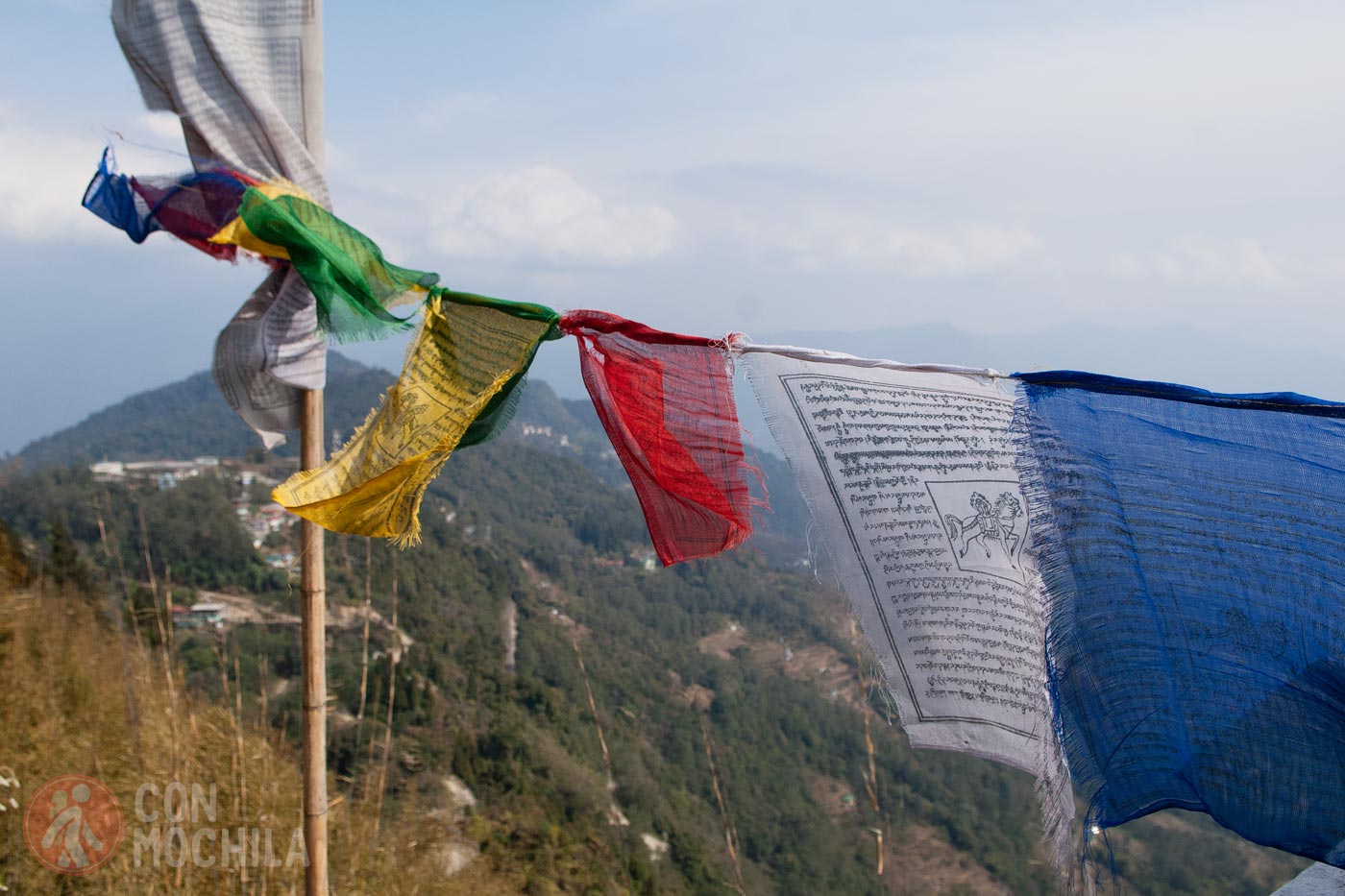
The region combines nature with Tibetan, Nepalese and Indian influences, which positively affects both its cuisine and the character of its people. It is also the gateway to the Nathu La Pass, which acts as a historical border for traders from China and India.
Sikkim is located in a mountainous region in northern India, and experiences a high-mountain subtropical climate with four distinct seasons. We’ll tell you what its climate is like in each season so you can select the best time to visit this state:
We know that the subject of visas can be somewhat confusing, especially for India, where obtaining one is an essential requirement for entry. In the article on how to obtain an Indian visa step by step (coming soon) you have information on how to apply for one online for up to 5 years.
It’s essential to travel to India with comprehensive insurance. We were among the first to offer the popular IATI discount, and you can now get it with Heymondo Travel Insurance as well.
You can find more information about both companies through the links provided above, or you can access the discount directly using the buttons below (in both cases, you’ll see the reduced final price on their website):
While many hotels, guesthouses, and restaurants in India offer free Wi-Fi, some travelers prefer or need a constant connection. We’ve included details on obtaining a eSIM India card with unlimited data (from Holafly) or with fixed data but cheaper (from Saily).
If you want to get it directly, here’s the link (with a discount) for both companies:
Unlike many other places in India, there are no railway stations in Sikkim. The nearest one to Gangtok would be New Jalpaiguri in Siliguri, about 150 km away. To get to Darjeeling or other cities, you can buy a train ticket in one of the sleeper classes (3rd class).
Getting to Sikkim by bus is the most common option, with several companies operating different routes. Taking a taxi with a private driver can also be a good option to marvel at the mountains, but you will have to negotiate with the driver beforehand.
The nearest operational airport from Gangtok is Bagdogra, about 120 km away. You can find cheap flights from the link below.
Established in 1642, Yuksom is considered a sacred place and means “the meeting place of the three monks”, as this is where three monks from Tibet selected the ruler, Chogyal, who would be the first religious king of Sikkim.
With around 2,000 inhabitants, it has become the base camp for climbing Mount Kanchenjunga (Khangchendzonga), and most of its inhabitants work in the tourism industry.
Below are a few places to visit in Yuksom. You can also take a private full-day tour to Yuksom from Pelling, visiting monasteries, lakes and local markets.
Dubdi Monastery, one of the oldest in Sikkim, is a Buddhist shrine, also called “Yuksom Monastery”, which is accessed after a one-hour walk from Yuksom. Dubdi, “The Retreat”, was built in stone in 1701 during the reign of Chogyal Namgyal, on a hilltop, and contains a number of images, symbols and manuscripts.
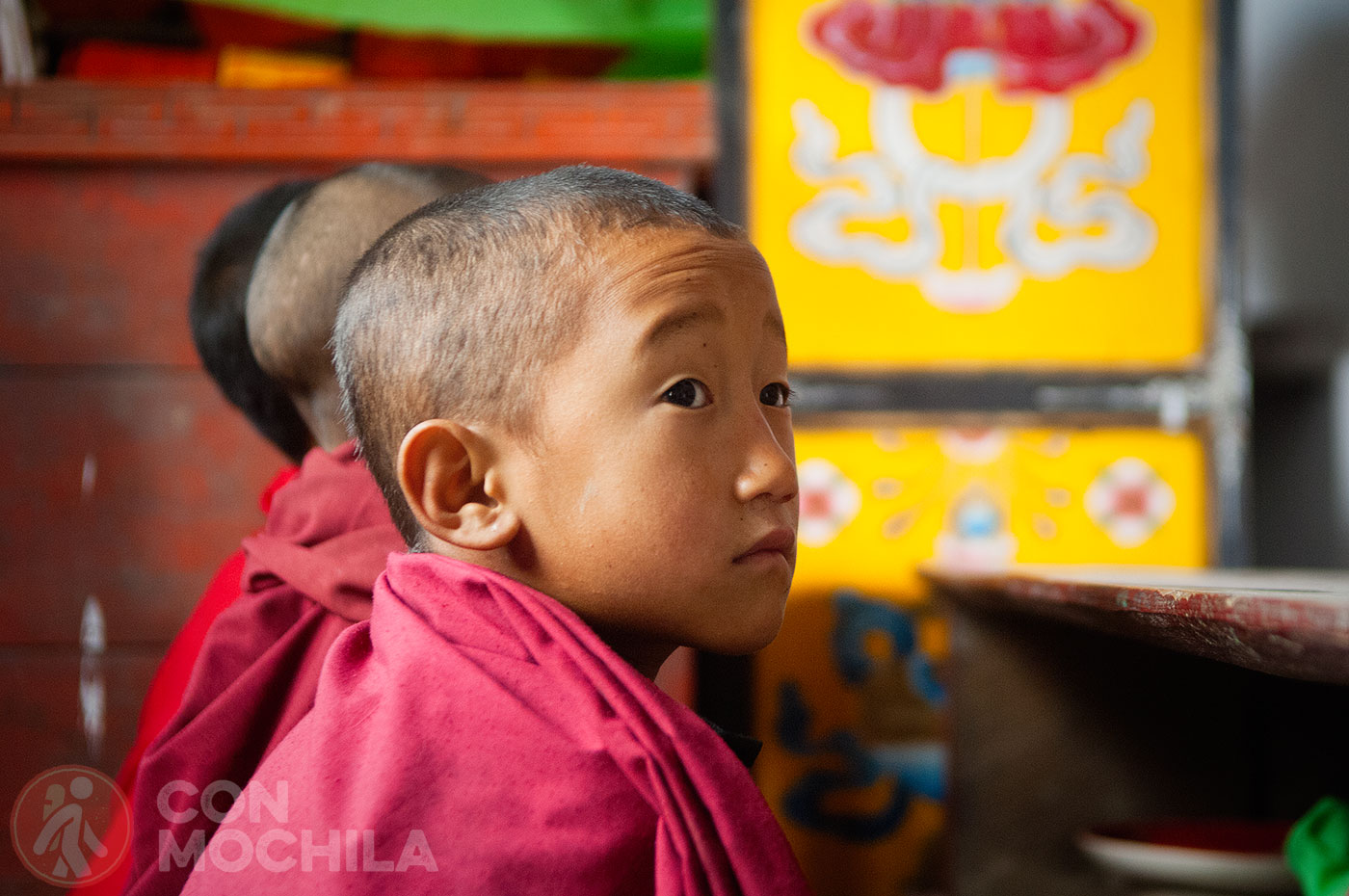
At the top of the roof, there is an ornate bell-shaped golden dome called Gyaltshen.
Along with the Dubdi and Ngadak Chorling monasteries, the Kathok or Kartok monastery, named after one of the three monks who crowned the first king of Sikkim, is one of the most important in Yuksom. It is located next to Kathok Lake and, after climbing a small wooden staircase, you can access the building, which is very striking due to the number of colors, including red as a base and yellow for its ornamentation, a classic Tibetan style.
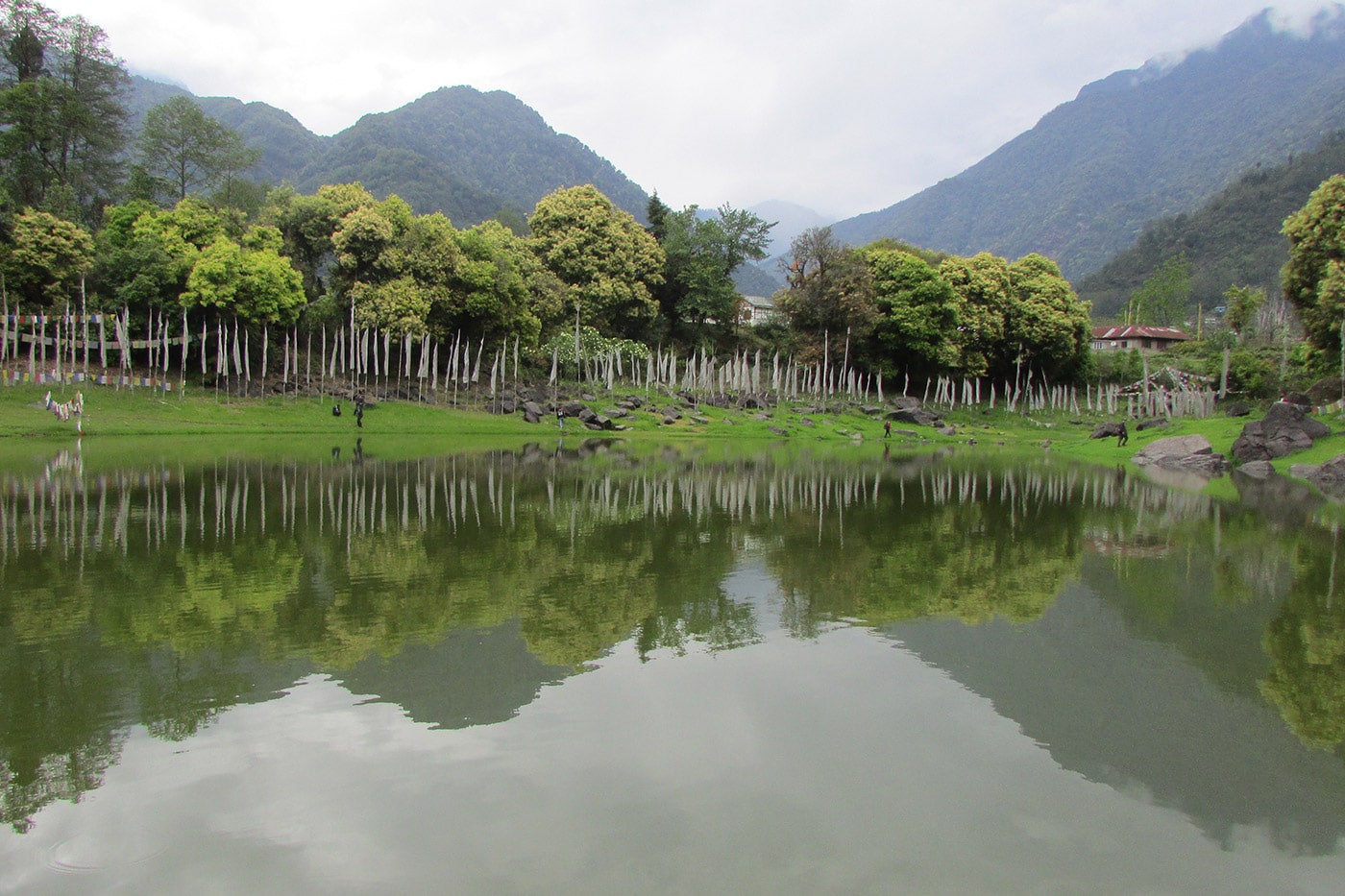
Halfway between Yuksom and Pelling are the Khangchendzonga or Kanchenjunga waterfalls, beautiful waterfalls over granite rock that are fed by the glaciers of Mount Khangchendzonga and delight the sight and senses of any visitor who approaches.
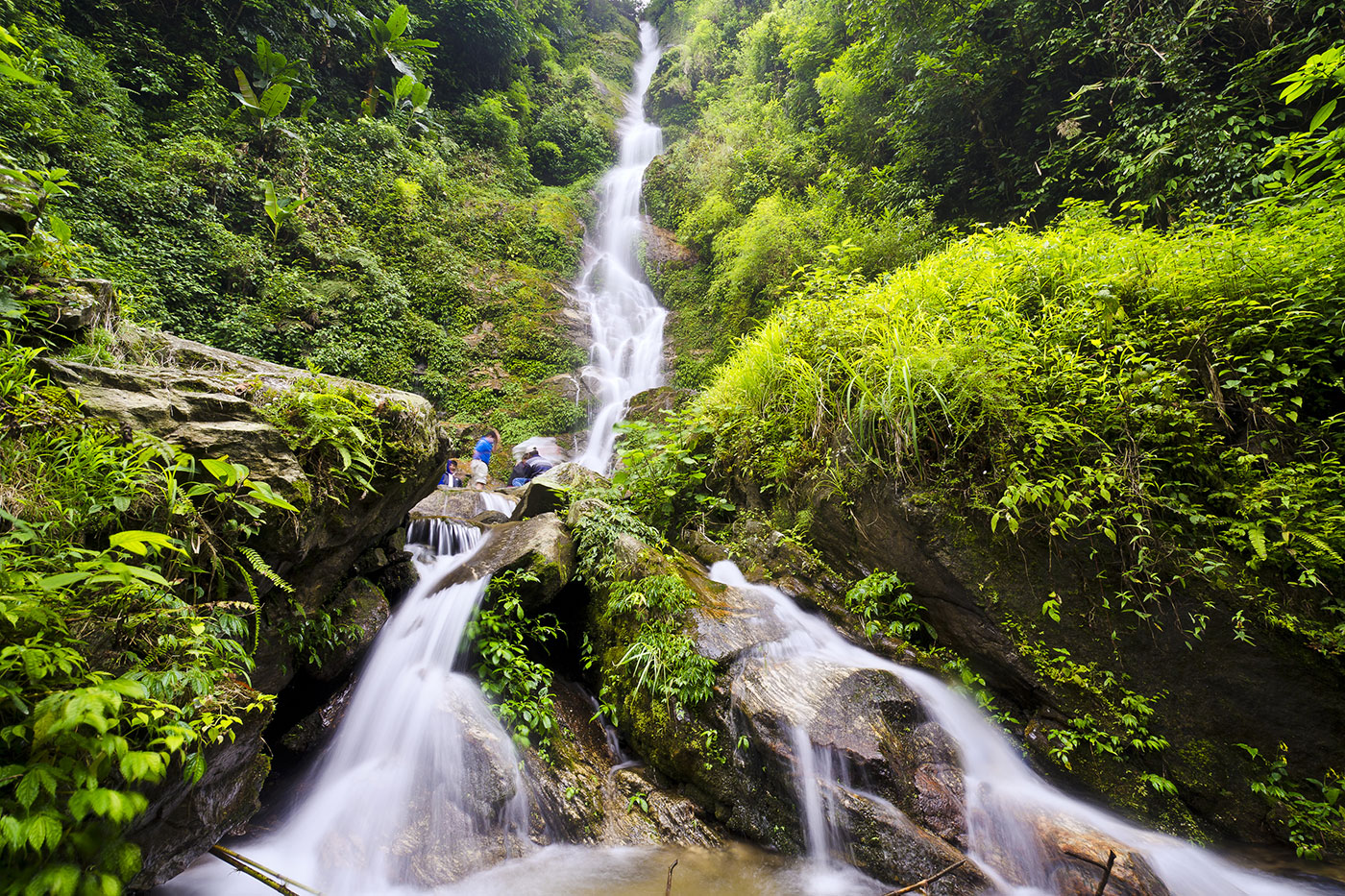
The falls can be seen from different areas, and you will have to walk a little uphill to get closer to the base. In the surroundings you can also find some monasteries such as the Rabdentse monastery or the Sanga Choeling.
Today it is a collection of ruins, but Tashi Tenka was a complex built for the delight of the royal family when Yuksom was the capital of the Namgyal reign.
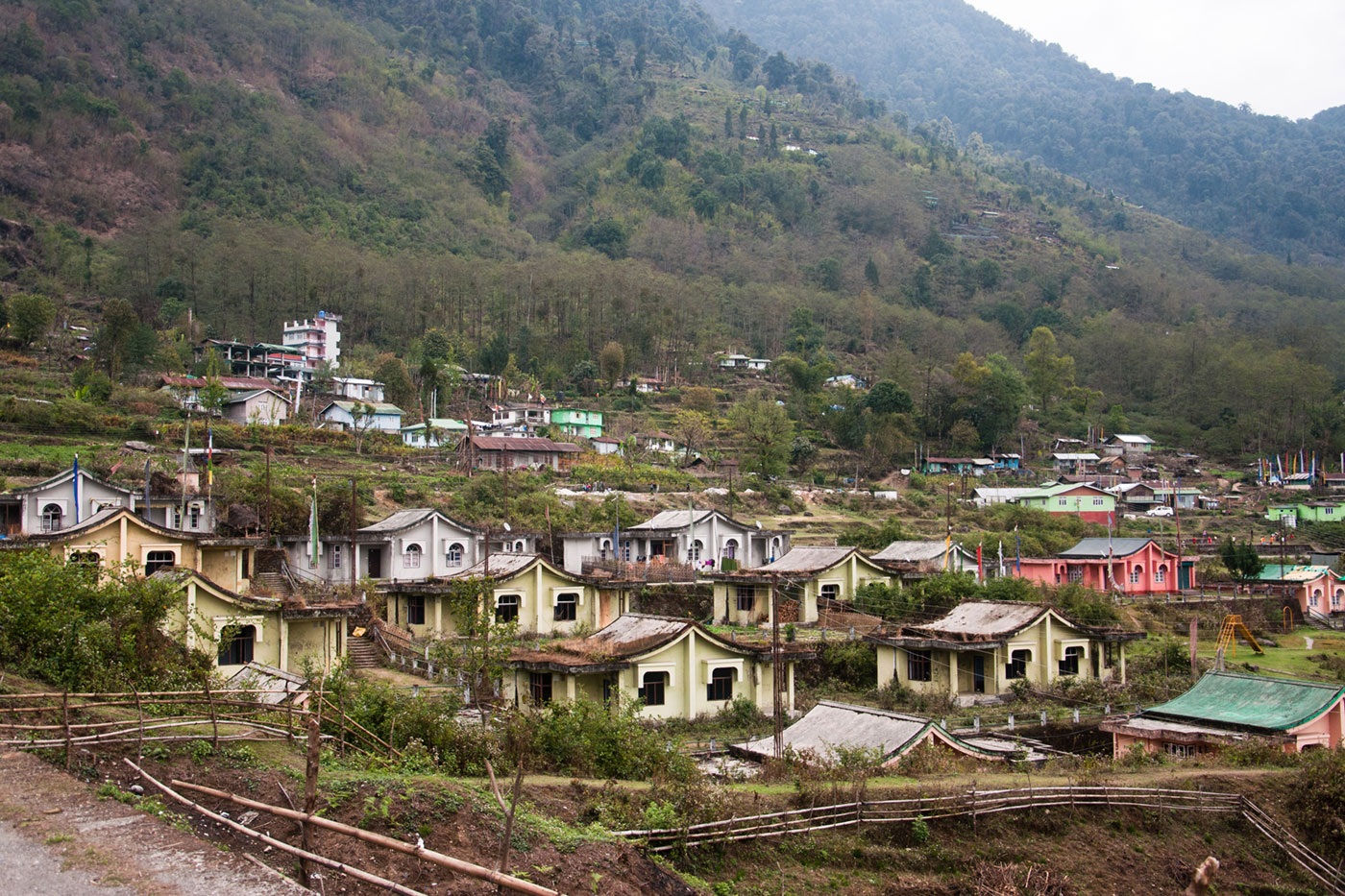
The short walk to the ridge will be worth it as the spectacular views it offers will make you spend a long time looking at the Rabdentse and Peyamangtse monasteries, Yuksom and all its blue and white houses, the Rathong valley with all its mountains in the background.
Once here, the best thing to do is to hike through the mountains surrounding Yuksom and visit the greenest and most impressive ecosystems in the Himalayas. Of course, you must have acclimatized to the altitude for a few days before starting, and be fit enough to be able to walk about 10 km a day in the mountains.
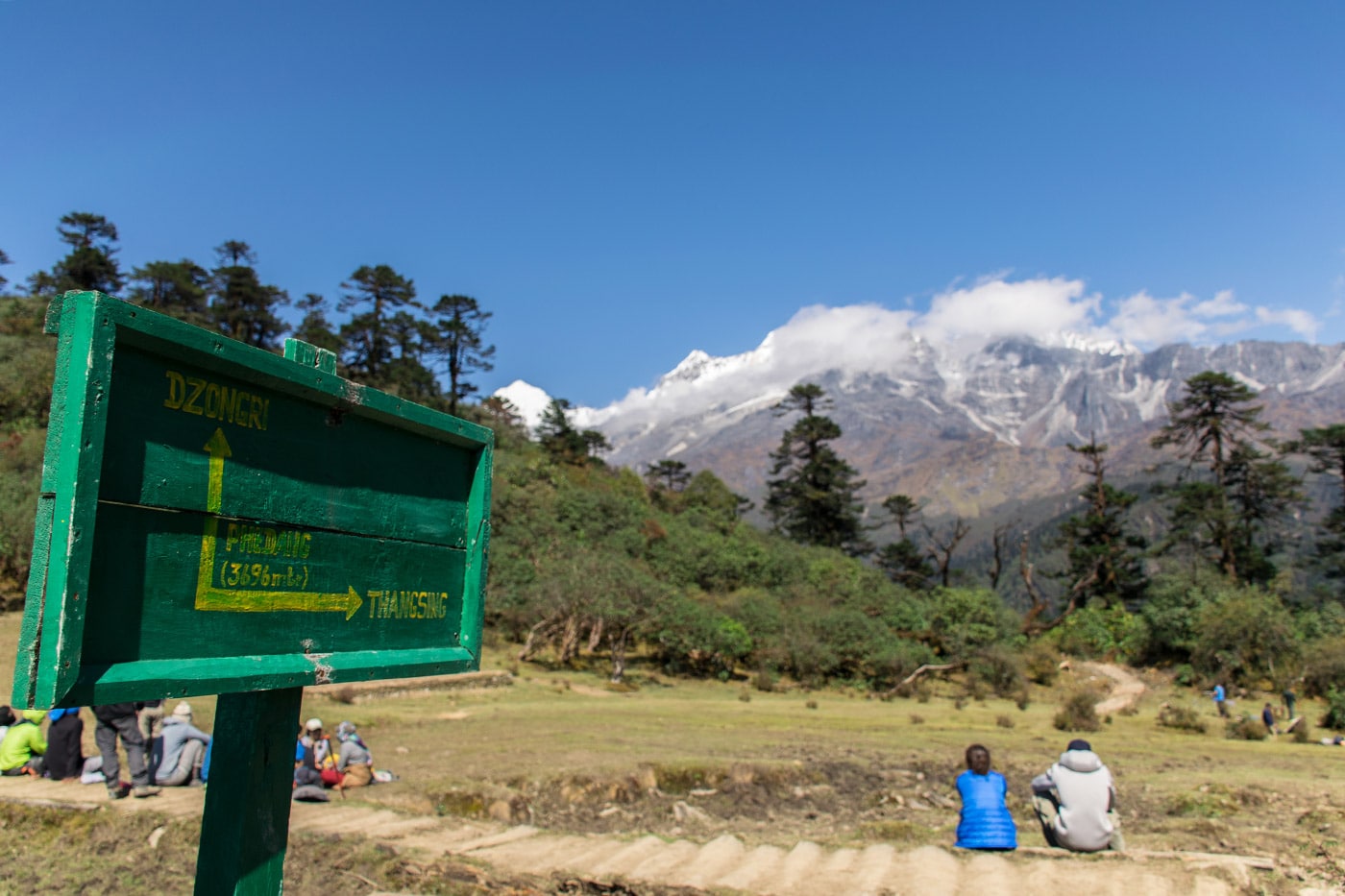
One of the most recommended trecks is the Goechala and Dzongi trek, which will take you on a walk among the most impressive mountains in the area, seeing the Kanchenjunga peak of more than 8,500 m, the Talung, or the Rathong.
One of the places not to be missed in the center of Yuksom is the Mani Hall temple, with large glass windows revealing enormous gilded copper cylinders, 18 to be exact, containing prayers.
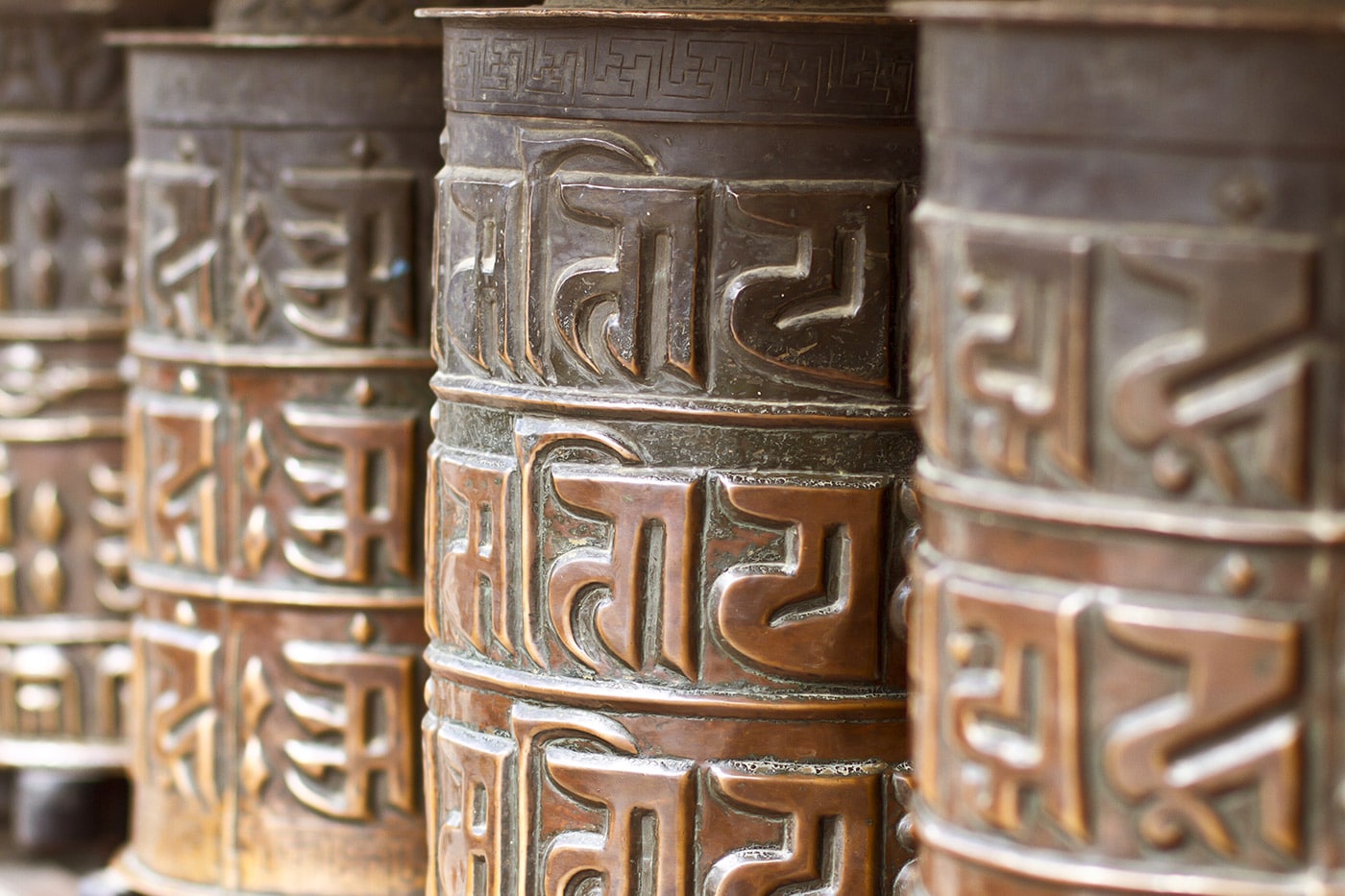
In this case, they are found in two rows, and Tibetan Buddhists rotate them symbolizing the repetition of a prayer.
Erected after the coronation of the first Chogyal of Sikkim, the four-seat stone throne found in Norbugang Park is part of the Buddhist pilgrimage as it is a place of great religious and spiritual value.
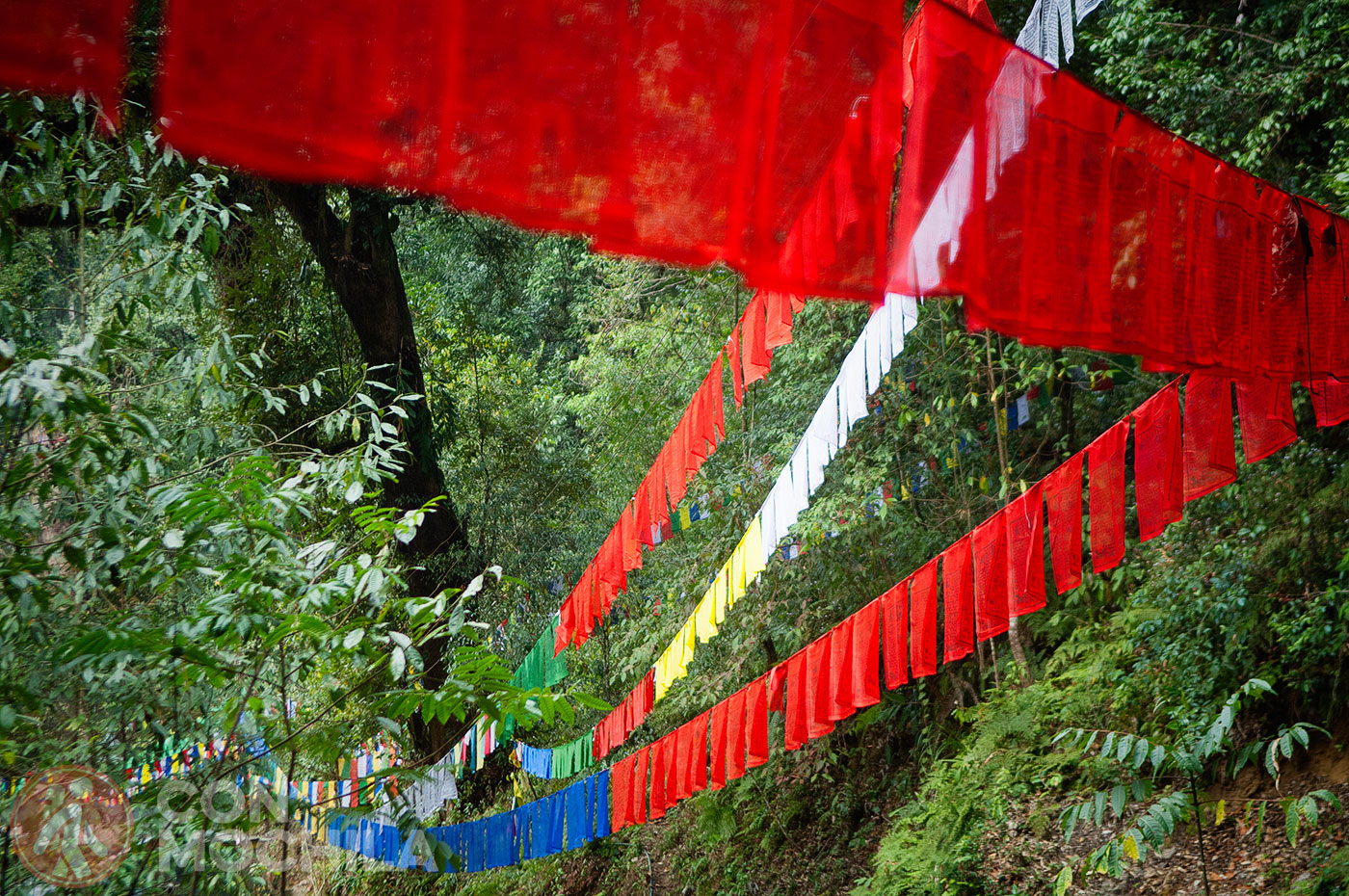
This small Yuksom garden adorned with colorful flags also has a small temple, plus a stupa (or chorten) said to have been built with water and earth brought from all over Sikkim.
Famous for its views of the Himalayas and Kanchenjunga and situated at an altitude of almost 2000 meters, Pelling is a small village in western Sikkim. The village itself doesn’t have much to offer, but it does boast two of the oldest monasteries in the region, as well as waterfalls, forested areas and ruins.
If you think that cities are best explored by strolling through their streets and discovering little corners, you might want to take this walking tour visiting the cultural heritage of Pelling and its monasteries.
Do you like to try the local cuisine? We recommend this guided tour to taste local dishes in Pelling. And below are some ideas for visits around Pelling.
Founded by Lama Lhatsun Chempo in 1705, Pemayangtse Monastery was built for pure monks (of Tibetan lineage) and is part of the pilgrimage circuit of monasteries from Yuksom. Located at 2000 meters above sea level, with beautiful snow-capped mountains in the background, it has been rebuilt many times after being destroyed in several earthquakes.
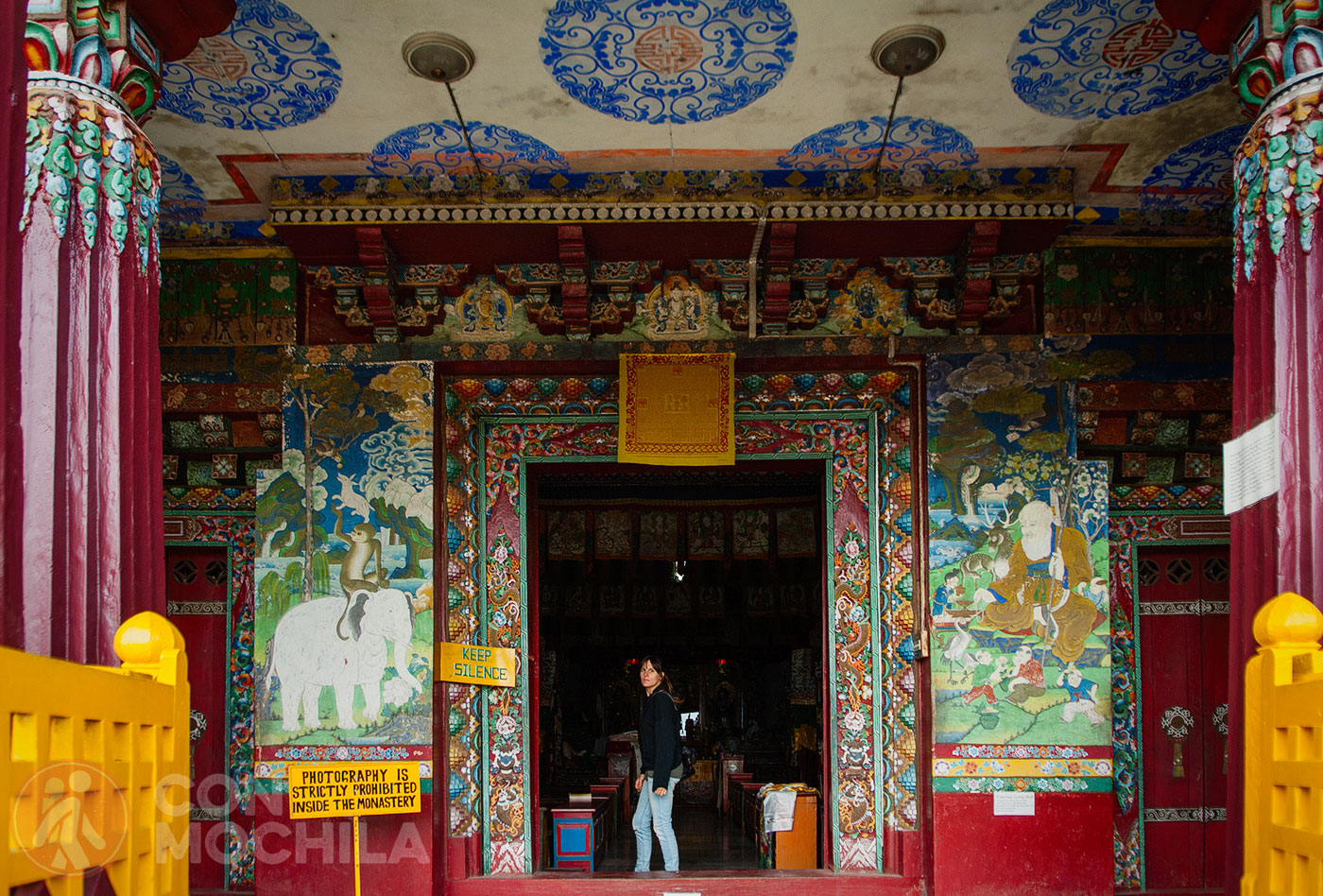
Inside we find paintings of rainbows and angels in the typical colors of these temples.
The Sanga Choeling Monastery, placed on top of a hill, was our first stop, and from there the views and the silence, which was only interrupted by some bells that rang in response to the touch of the wind, gave us a few minutes of peace. Dozens of flags of different sizes and colors made the moment even more magical.
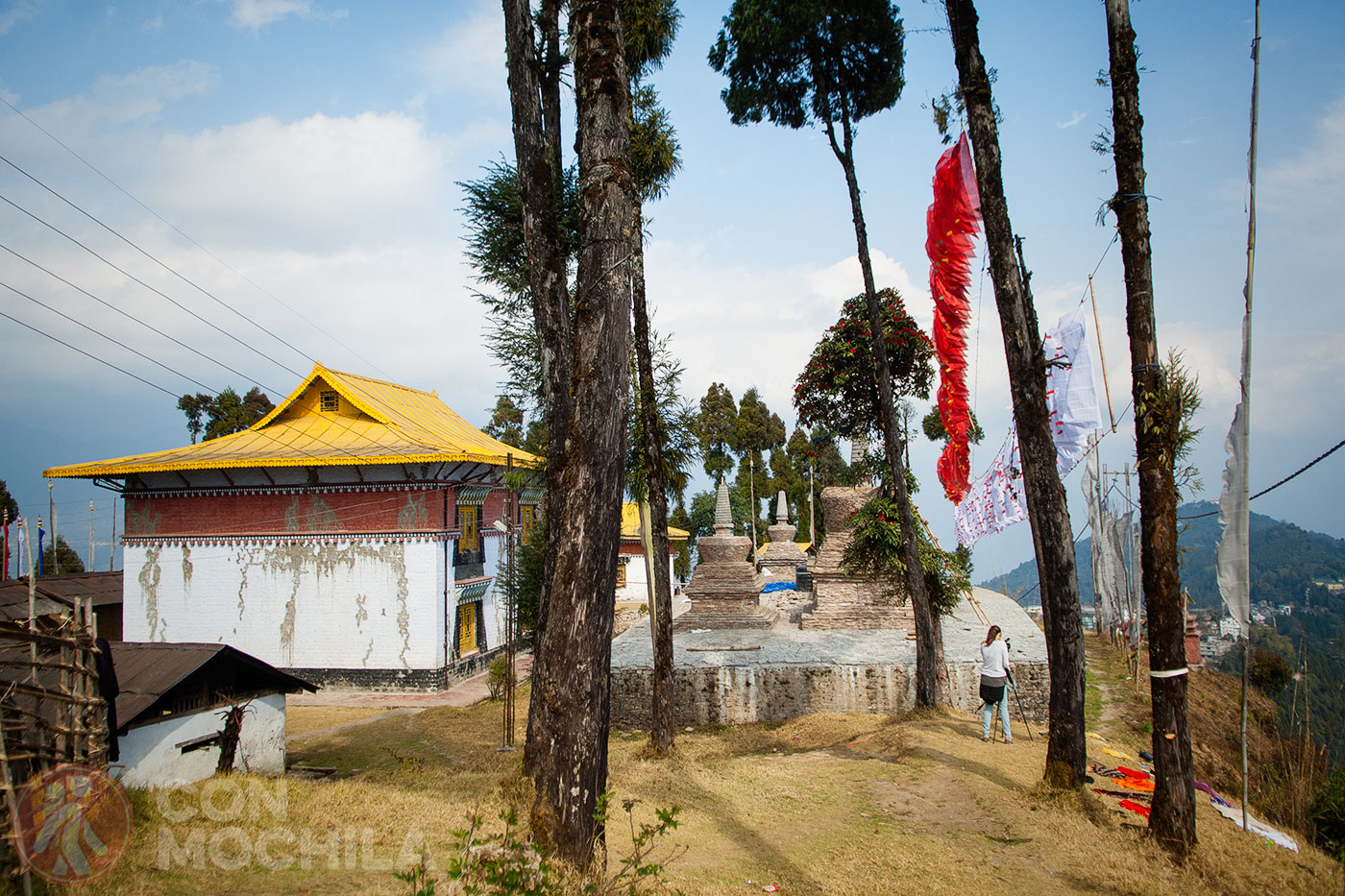
Built by the Lama Lhatsun Chempo in 1697, the walls are decorated with colorful paintings of saints and mythological creatures, as well as 17th-century clay figurines.
The so-called “Monastery Route” is a trail that passes through several villages including Melli, Khecheopalri and its lake to Yuksom. We did it all on our own, stopping at homestays. The day starts in Pelling, walking up some hills to Melli, where we visited the first of the monasteries and where we saw several monks making crafts.
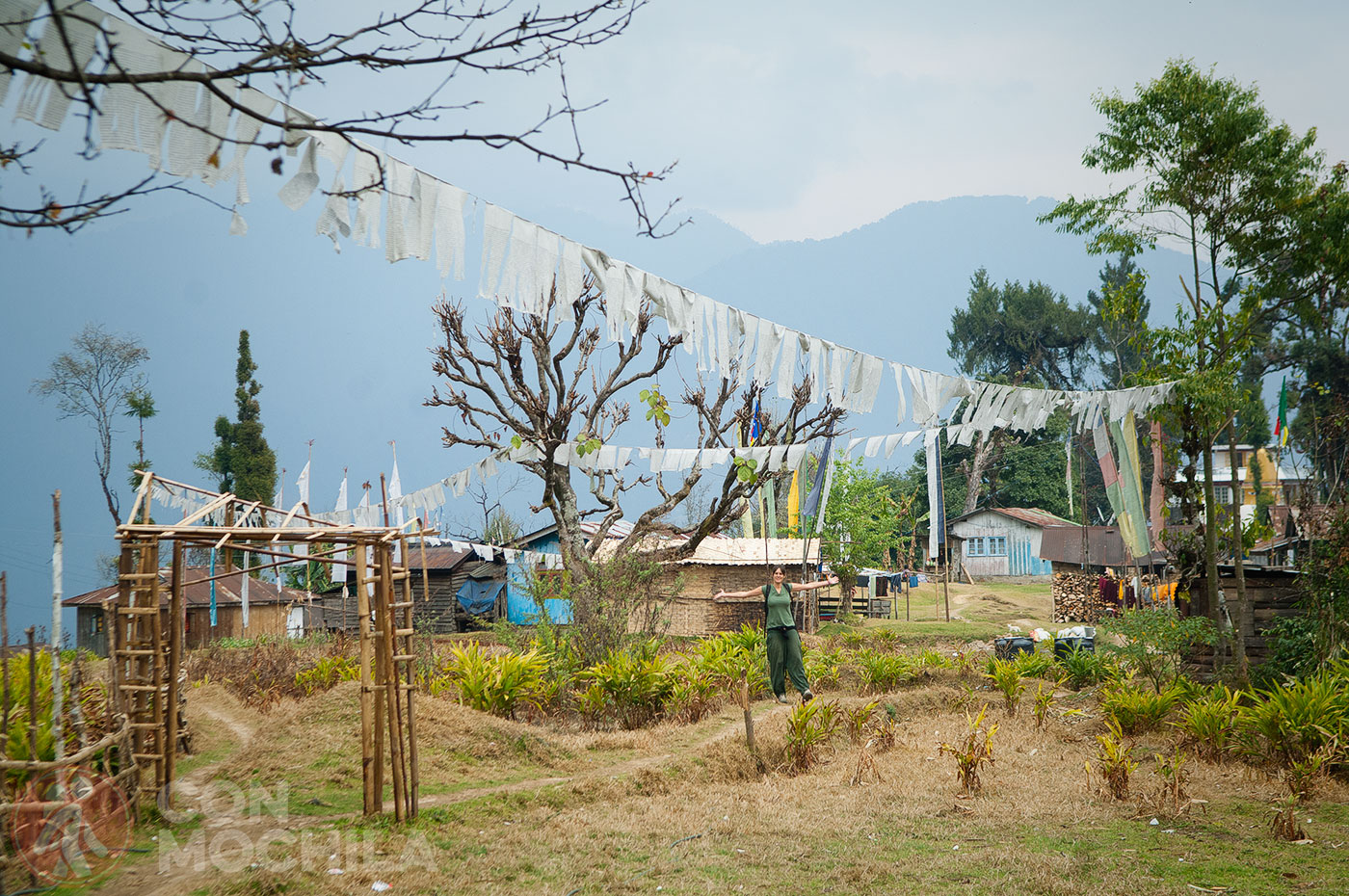
We reached Khecheopalri, where we saw a new monastery and the sacred lake. The end of the trek meant a 2-hour descent to take a jeep to Yuksom, and from there back to Pelling.
Rabdentse, the former capital of Sikkim until Nepalese troops invaded in the 17th century, is part of the Buddhist pilgrimage along with other monasteries in the area. It is strategically located on a hilltop and offers stunning views of the mountains surrounding Kanchendzonga Peak.
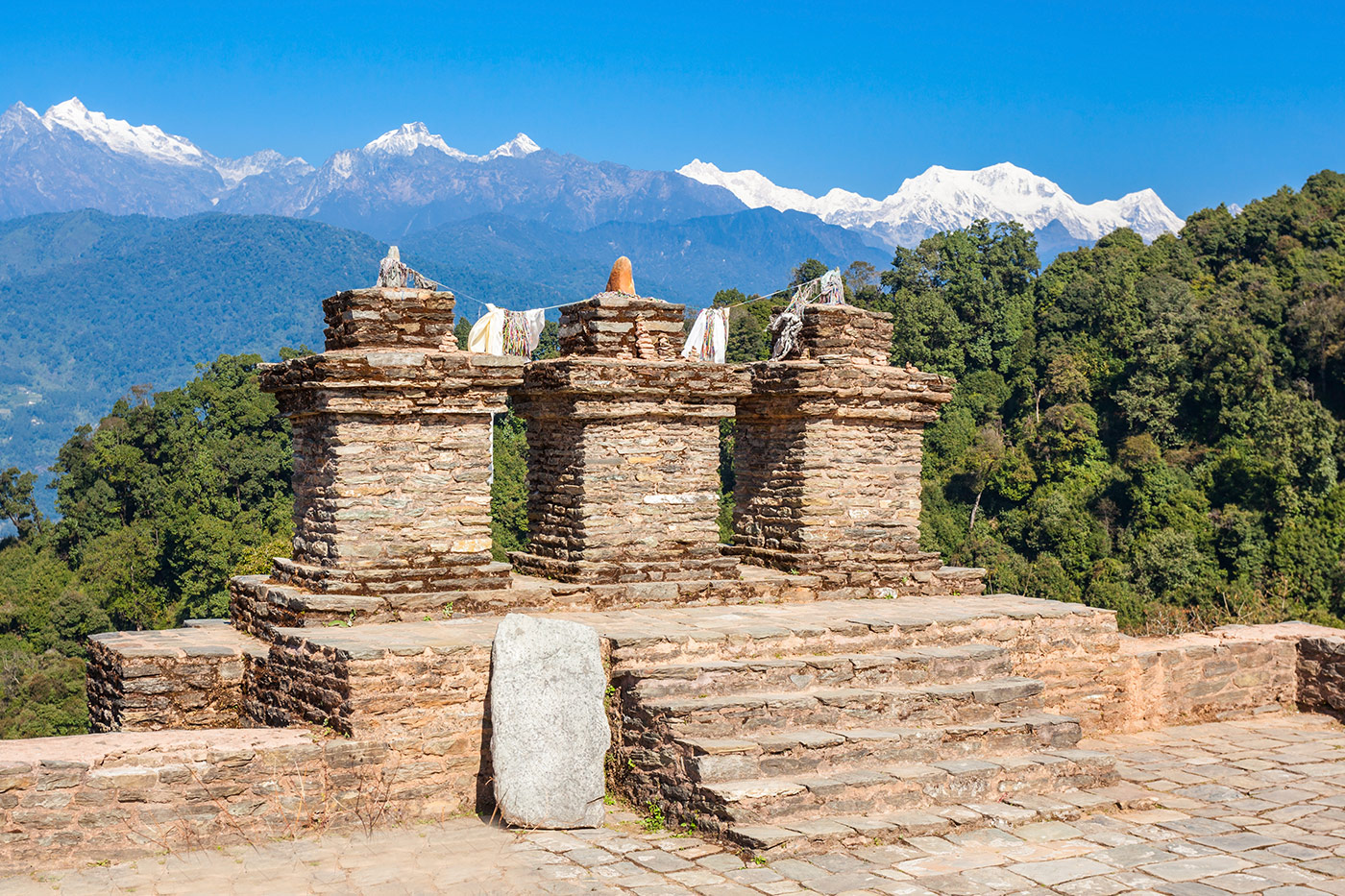
Following a path through a dense forest, we will come across some buildings, such as the three chortens that were used by the royal family to offer prayers to their gods.
Surrounded by the great mountains of the Himalayas and with a fairly mild temperature throughout the year, Gangtok, the modern capital of Sikkim, is the largest city in the entire state, with about 100,000 inhabitants.
It is the main base for tourism in Sikkim, from where many visitors organize their trekkings, and it’s also an important pilgrimage center for Buddhists due to its numerous monasteries. Do you want to visit Gangtok? We leave some ideas below for you, and we also recommend a private full-day visit to see the best places in Gangtok by car. Or if you are more of those people who prefer to go on foot, you can try this cultural walk visiting the historical heritage of Gangtok.
Built by Trulshik Rinpoche in 1945, the Do Drul stupa is one of the most important stupas in Sikkim and houses numerous relics of Buddhist holy books and religious objects. The golden-coloured upper part can be seen from various places in Gangtok.
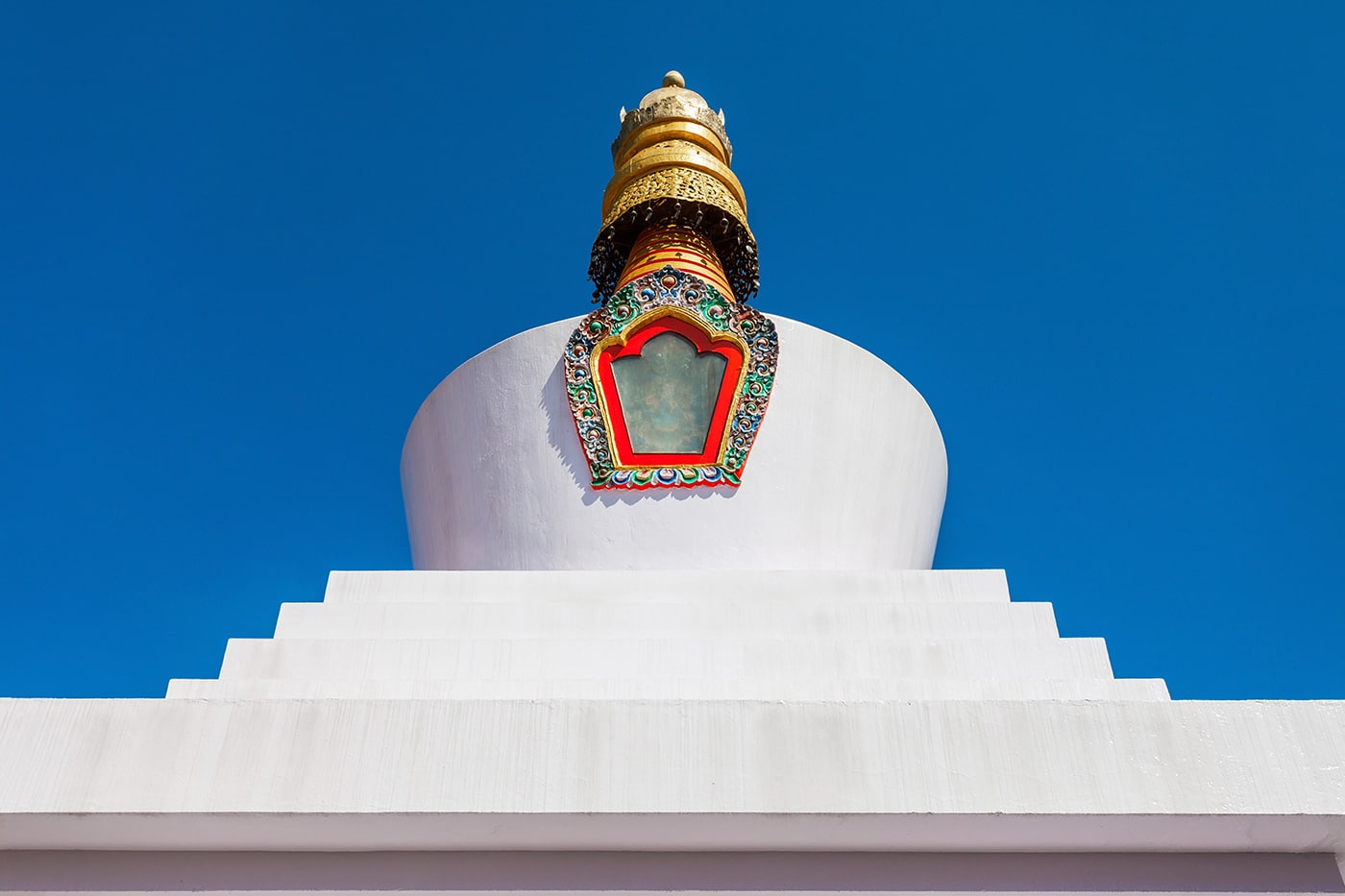
In the surroundings of the stupa we find more than 100 gilded copper cylinders containing prayers in Tibetan, as well as other small stupas.
About 5 kilometers south of Gangtok, we find the Namgyal Institute of Tibetology, one of the few institutes outside Tibet. Opened in 1958, this center houses a museum, a research center and a library, and preserves various writings, works and tapestries used in the practice of Buddhism.
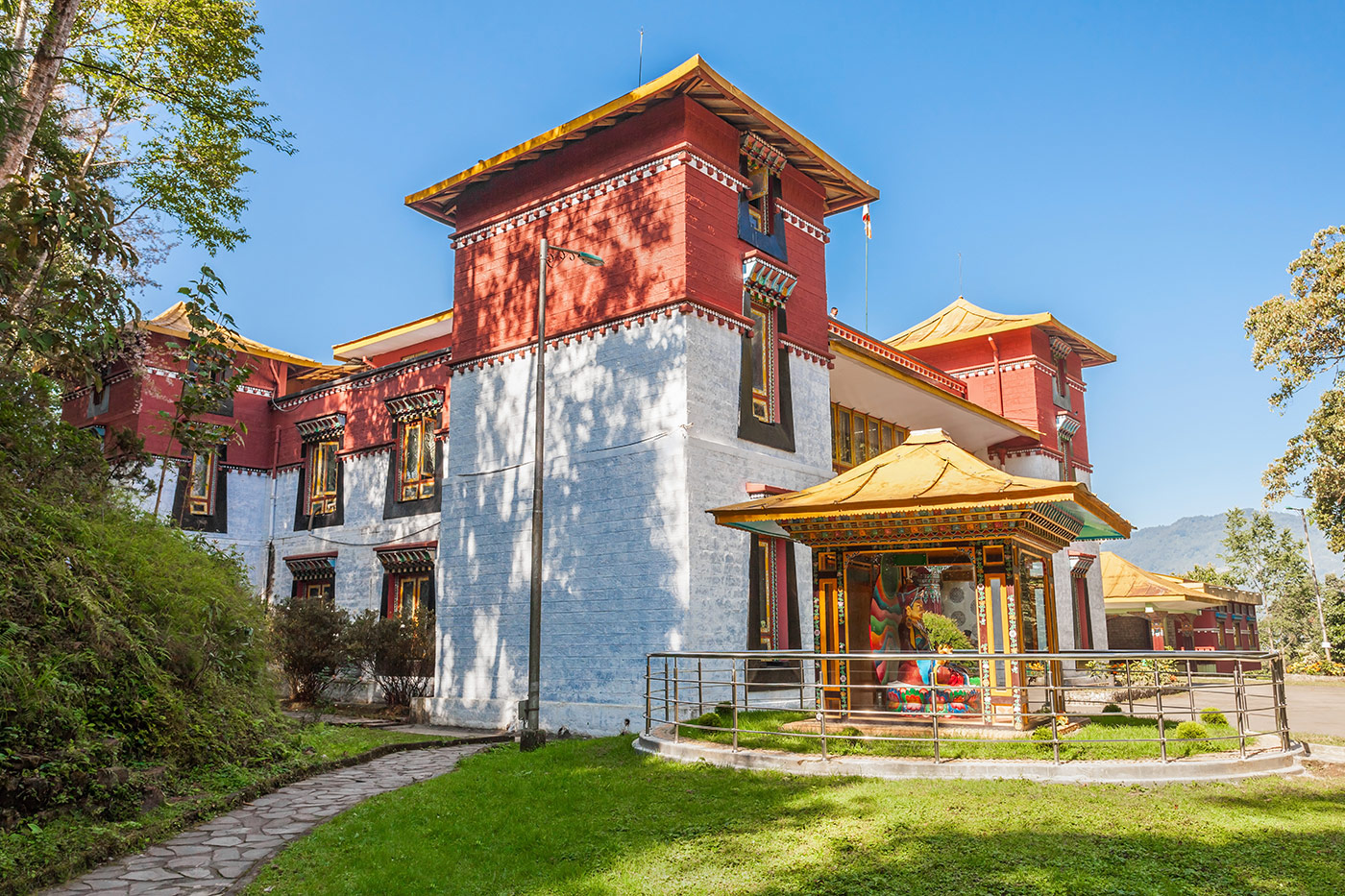
Atop a hill and after climbing numerous steps, stands the small Ganesh Tok temple, dedicated to Ganesh. The temple itself is quite small, but it is worth the climb to admire the views over Gangtok and the Kanchenjunga peak.
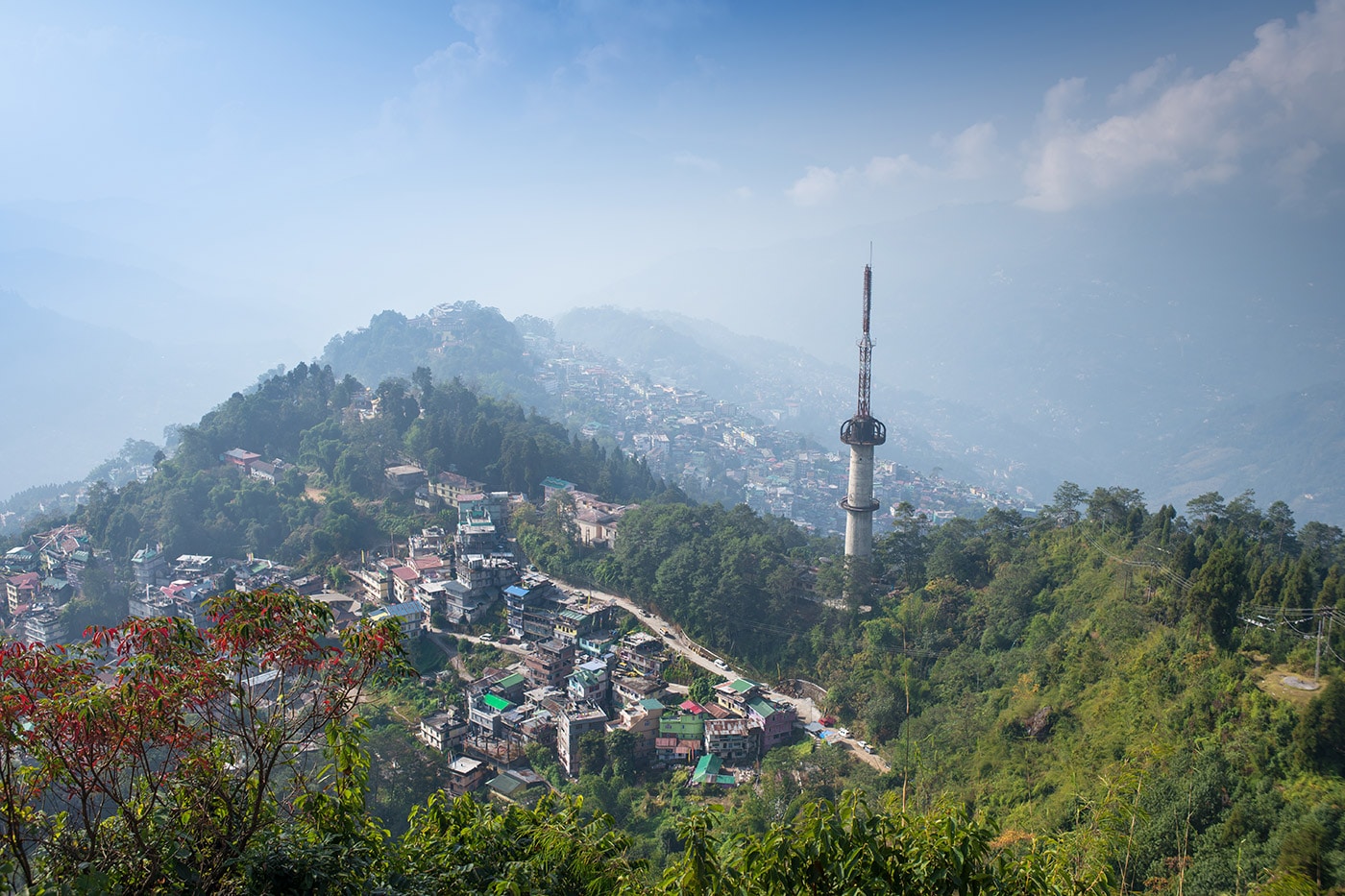
Decorated with colorful flags, it has a circular balcony or observatory, from where we can also see the Gangtok television tower. If you go up early in the morning, you will be able to see the devotees and the priest welcoming them.
Also called the Dharma Chakra Centre, Rumtek Monastery is a gompa or complex built by the Karmapa (highest representative) of the Kagyu Buddhist order in the mid-18th century, although it was rebuilt in the 1960s.
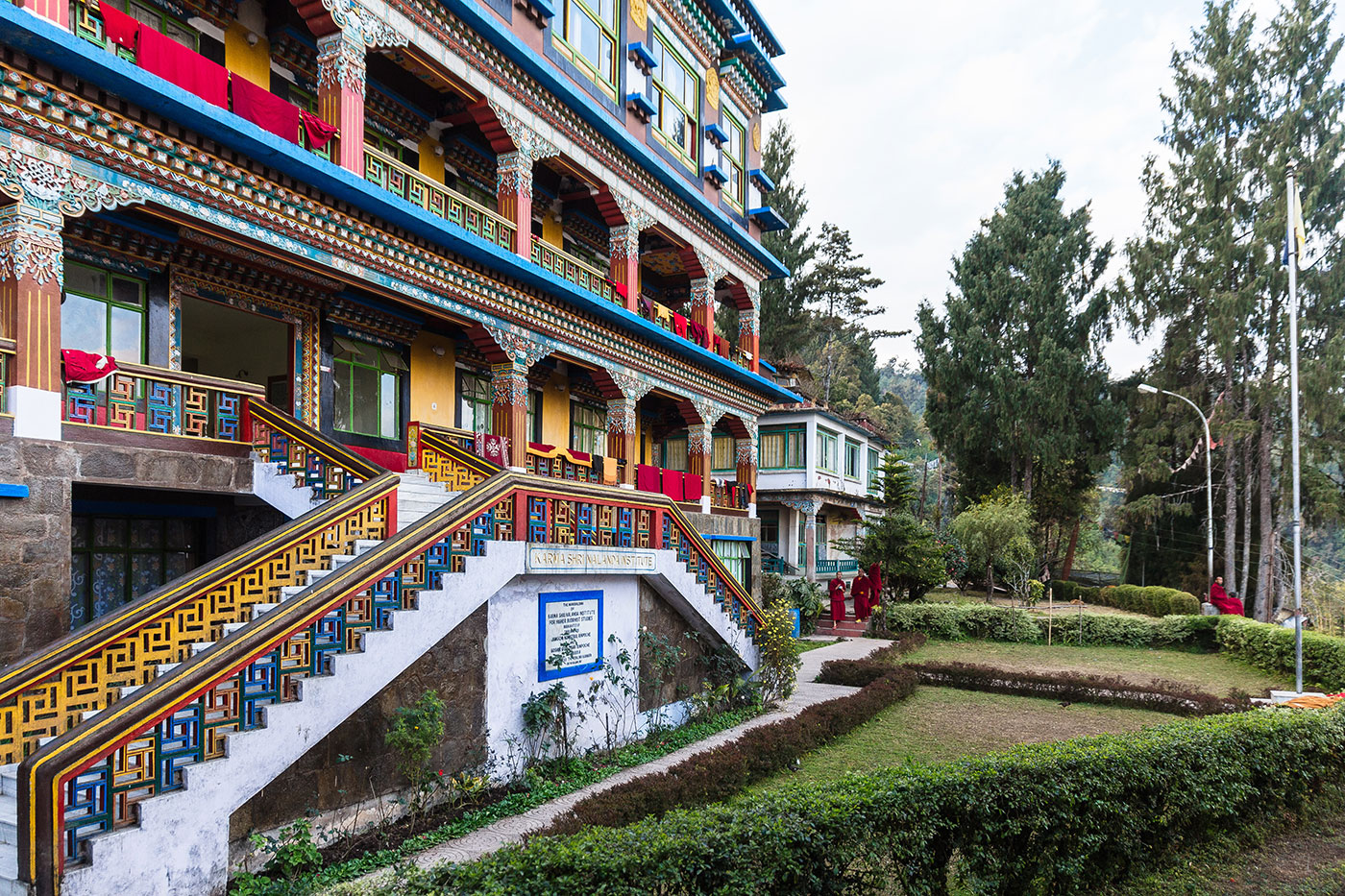
In the complex we find the main temple of 4 floors, built in classical Tibetan architecture, several stupas around it, a school, and the rooms of the monks who live here.
In the gardens of the palace of the ancient kings, the Chogyals of Sikkim, we find the Tsuklakhang Monastery or Royal Chapel. Built in a traditional architectural style, its interior features walls richly decorated with colorful paintings and images of Buddha and other Buddhist deities.
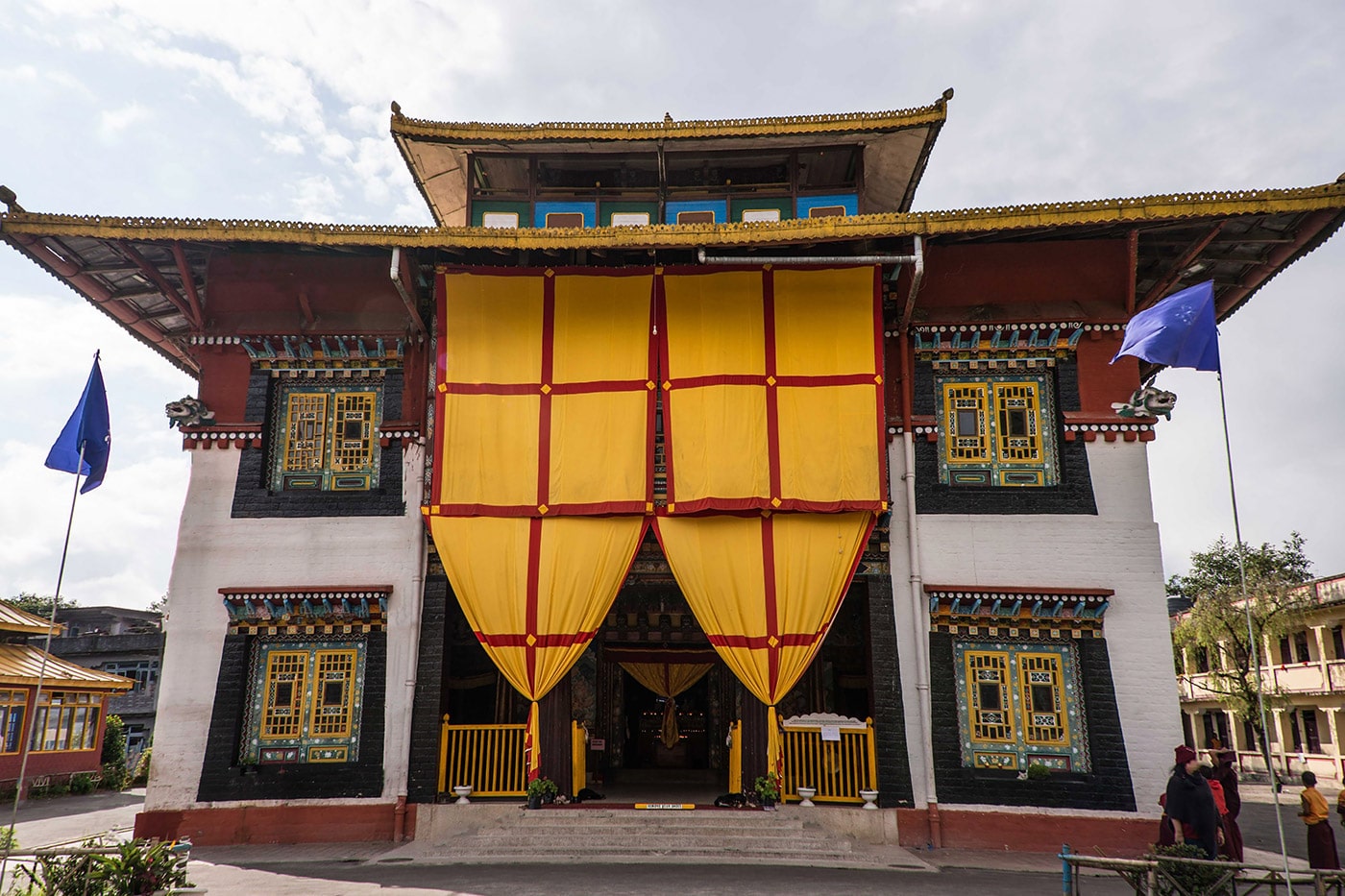
Carved columns have witnessed coronations, ceremonies and royal marriages. Various festivals are held throughout the year, some with dancing and masked monks.
Belonging to the Nyingma Buddhist order, Enchey Monastery (Solitary Monastery) was initially built in the 19th century and rebuilt in Chinese architectural style in 1909. Its sanctity is said to come from two deities who inhabit the monastery.
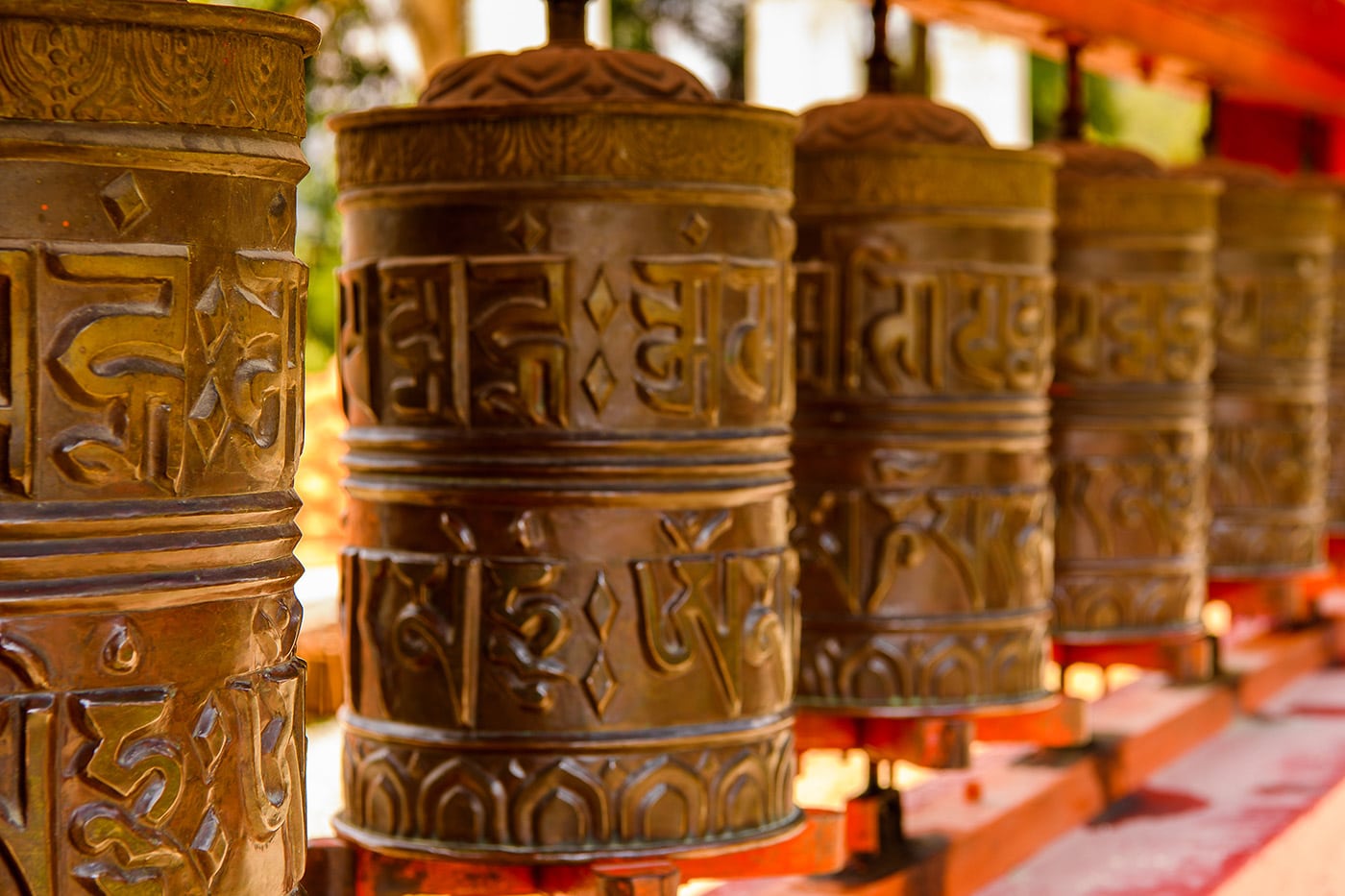
Today, it is home to just under 100 monks who perform the famous Chaam dance in June. To get there, you must cross a coniferous forest and the television tower.
In the south of Sikkim we find the Buddha Park of Ravangla (about 55 km from Pelling), also called Tathagata Tsal. Built in 2006 on the 2550th anniversary of the birth of Gautama Buddha, the government and the inhabitants of Ravangla decided to create a complex with a giant statue of Sakyamuni Buddha and a beautiful garden surrounding it.
Visit the city of Pelling and its monasteries, as well as Buddha Park, on this private tour. It includes transportation in a private vehicle and a visit to local markets, where you can taste traditional dishes.
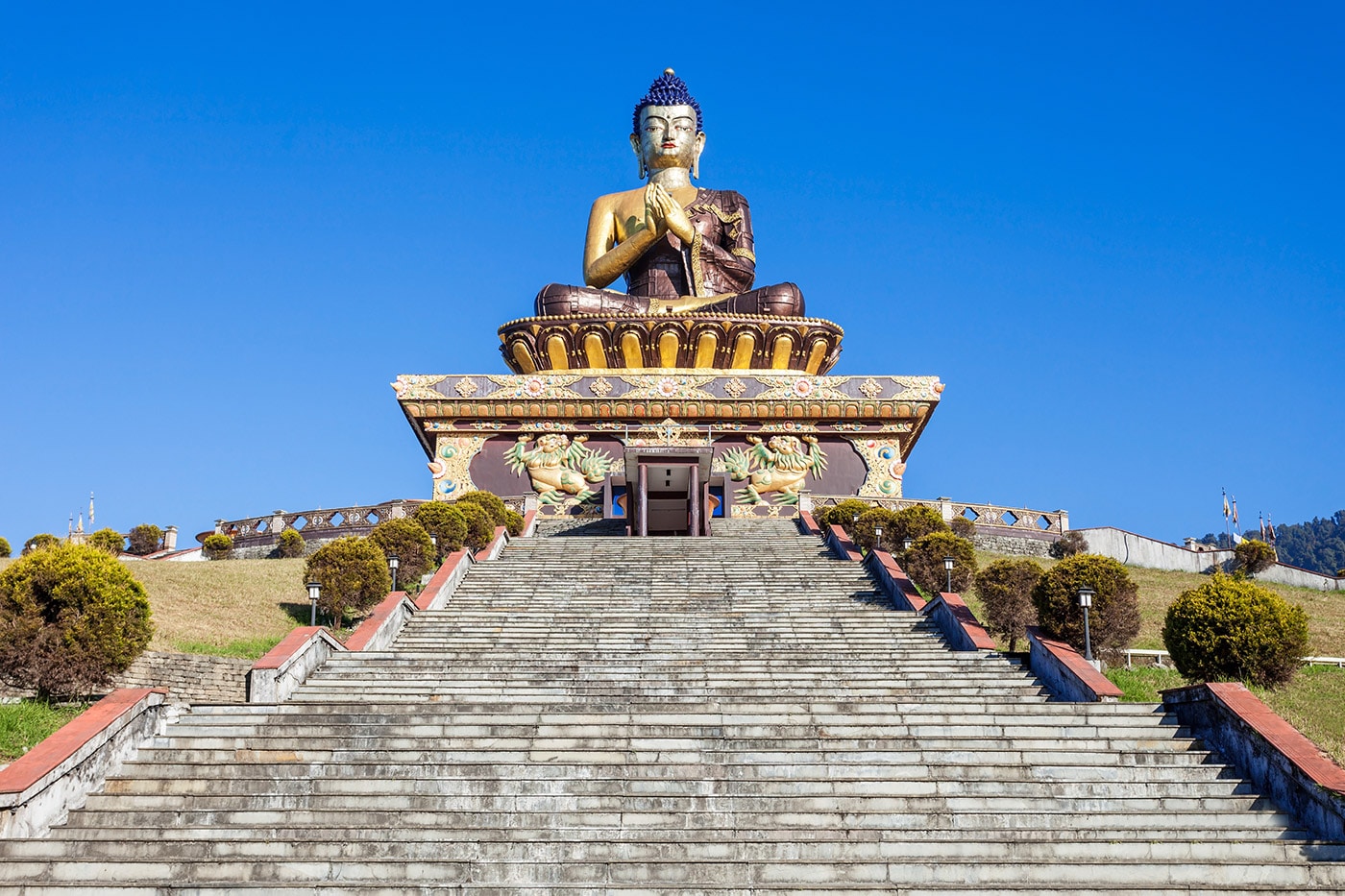
As expected, it is part of the important Buddhist pilgrimage circuit.
In the northwest of the state of Sikkim, about 120 km from Gangtok, we find the beautiful Yumthang Valley or the Valley of the Flower Sanctuary. As its name suggests, it is a natural sanctuary full of flowers, hot springs and meadows surrounded by mountains, and the best time to see it in bloom is from March to June.
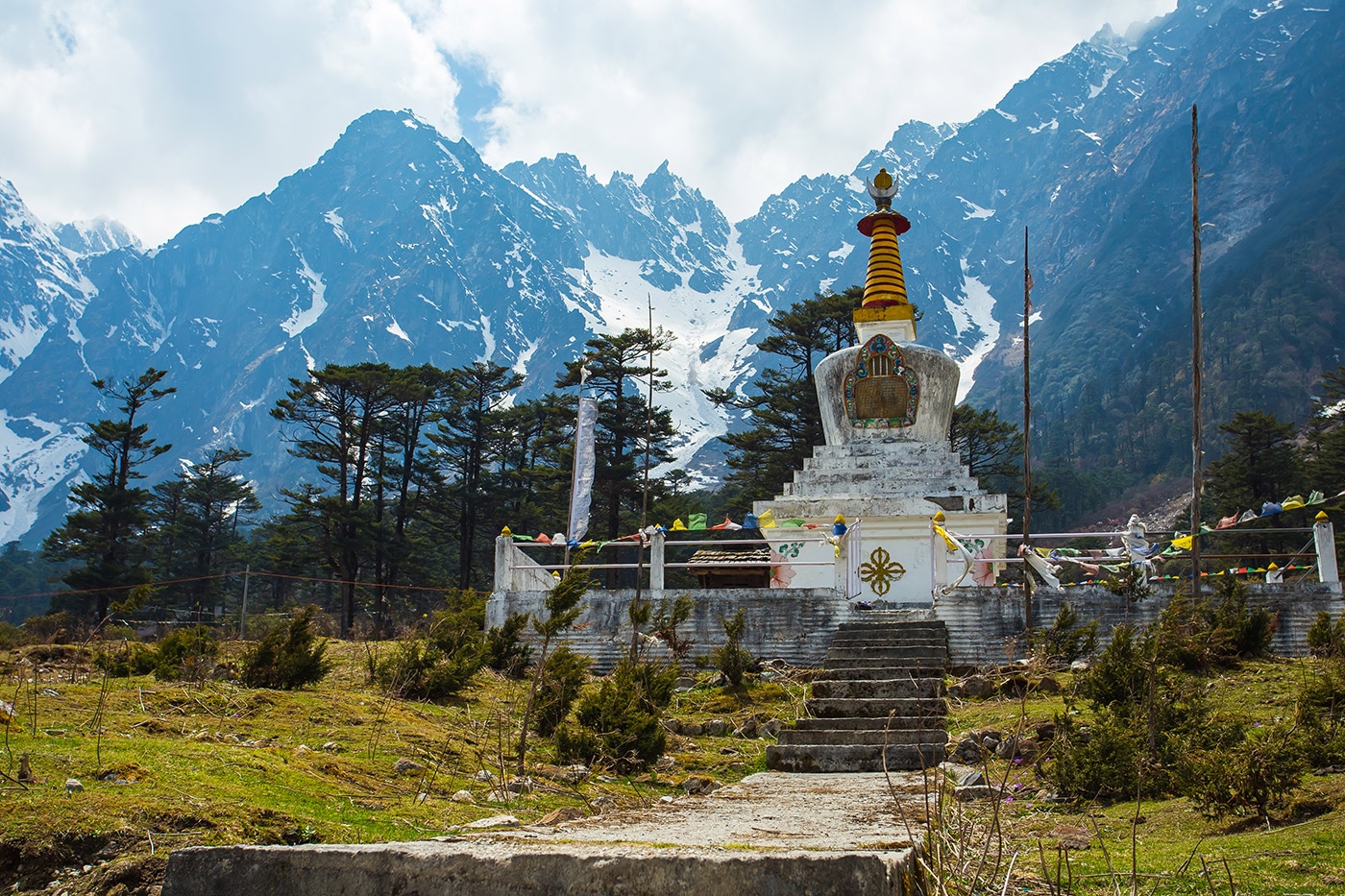
At a couple of hours from the sanctuary we will find a small and picturesque town, Lachung, at almost 3000 meters above sea level and with inhabitants of Lepcha and Tibetan descent.
For Hindus, it is very important to make the pilgrimage to the four dhams that indicate the abodes of the gods in the four cardinal directions. In Sikkim, there are four sacred caves in the indicated positions, so many believers visit the four caves in this order: to the east Sharchog Beyphug, to the south Khadr Sangphug, to the west Nub Dechen Phug and to the east Jhang Lhari Nyingphug.
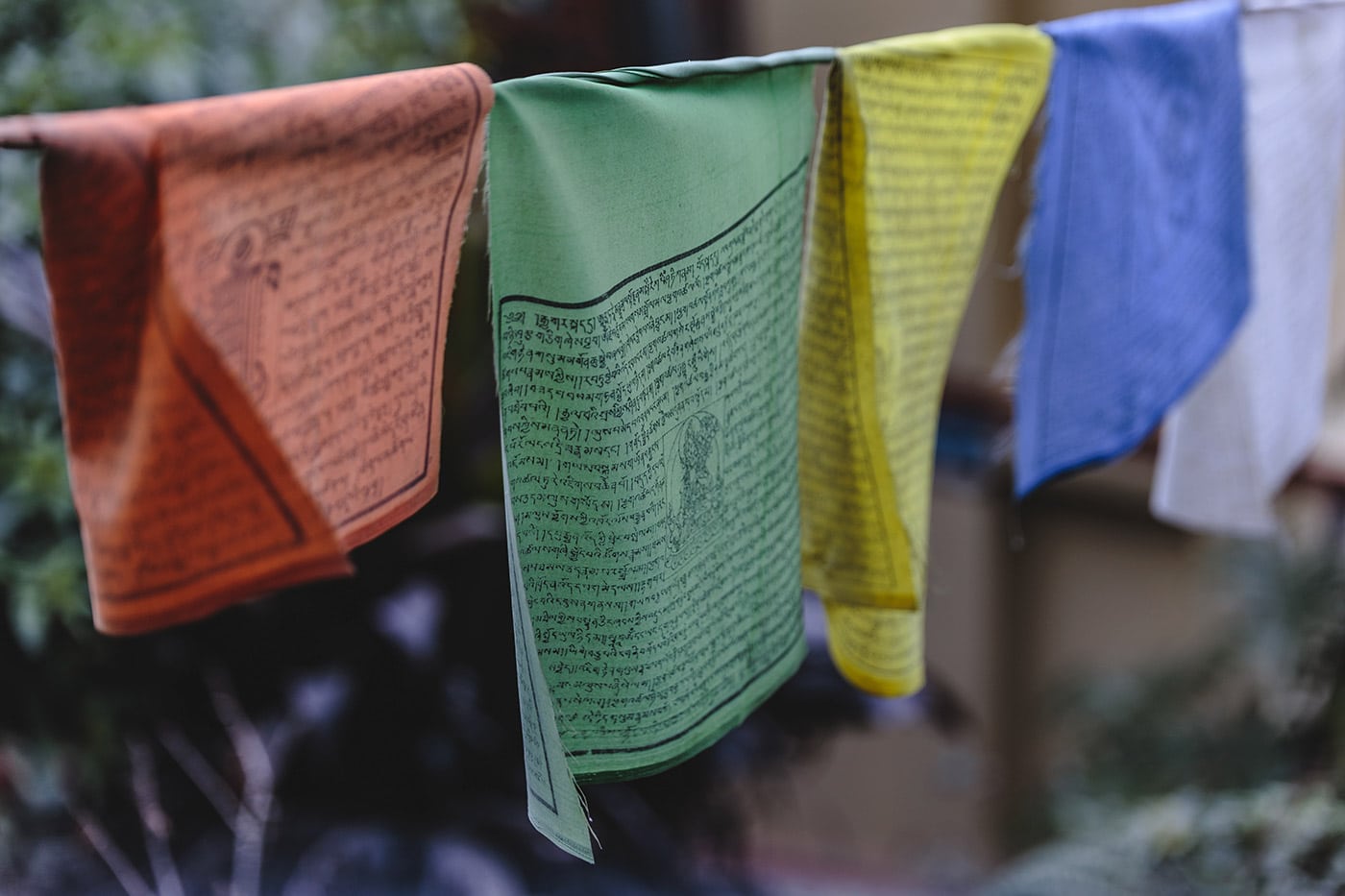
Two small villages, Kaluk and Rinchenpong, in the eastern Himalayas, offer us a wonderful view of the most imposing mountains on our planet, as well as being a small paradise for those who love botany and nature.
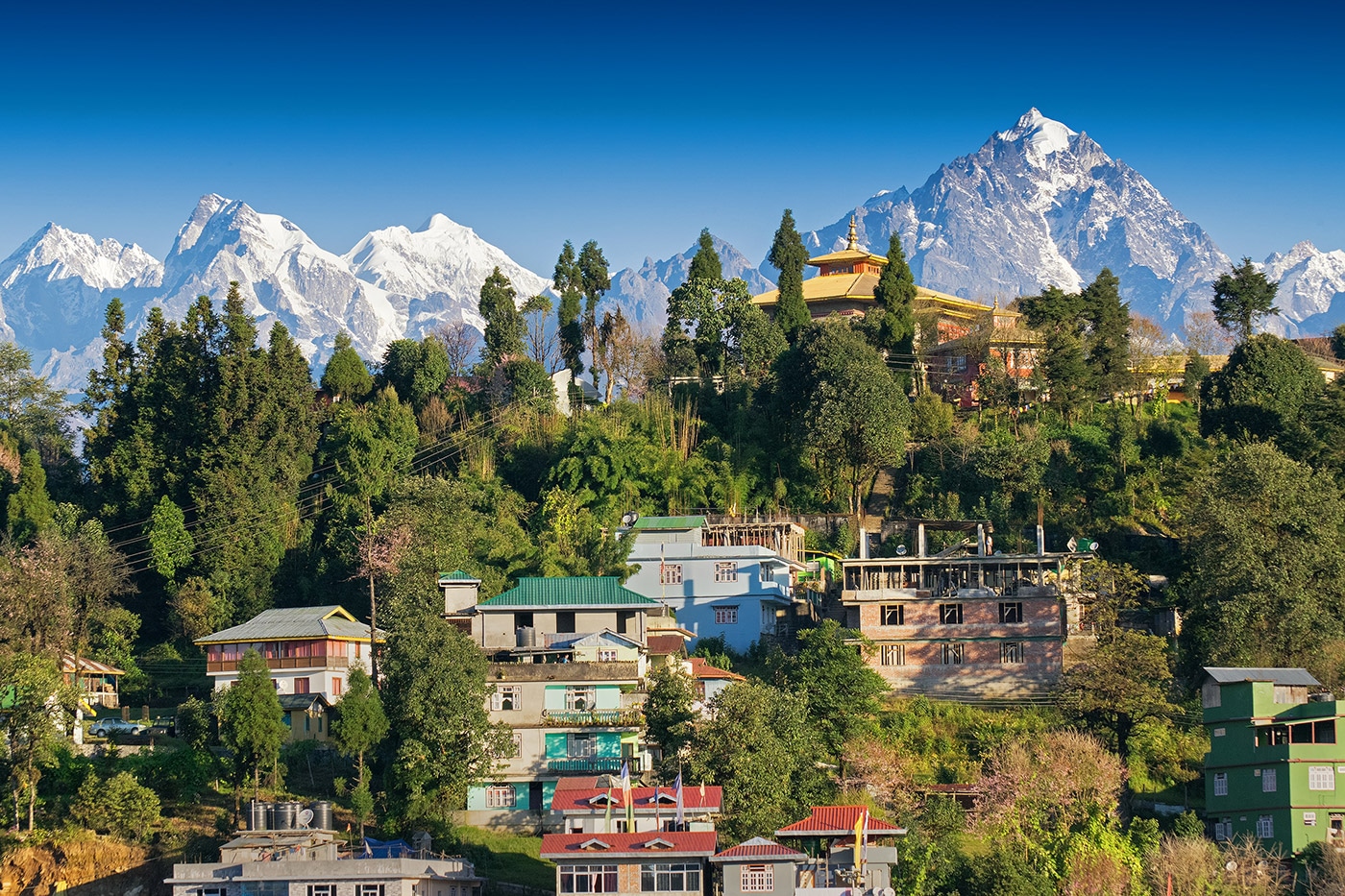
There are a few resorts in Kaluk to stay overnight, and from there you can walk the distance (3 km) to Rinchenpong to see the monastery and be captivated by the tranquility of this area.
The Silk Road was an ancient network of trade routes connecting the West and the East. Nathu La Pass was part of the Ancient Silk Road and is one of the three passes connecting the borders between India and China, about 50 km from Gangtok.
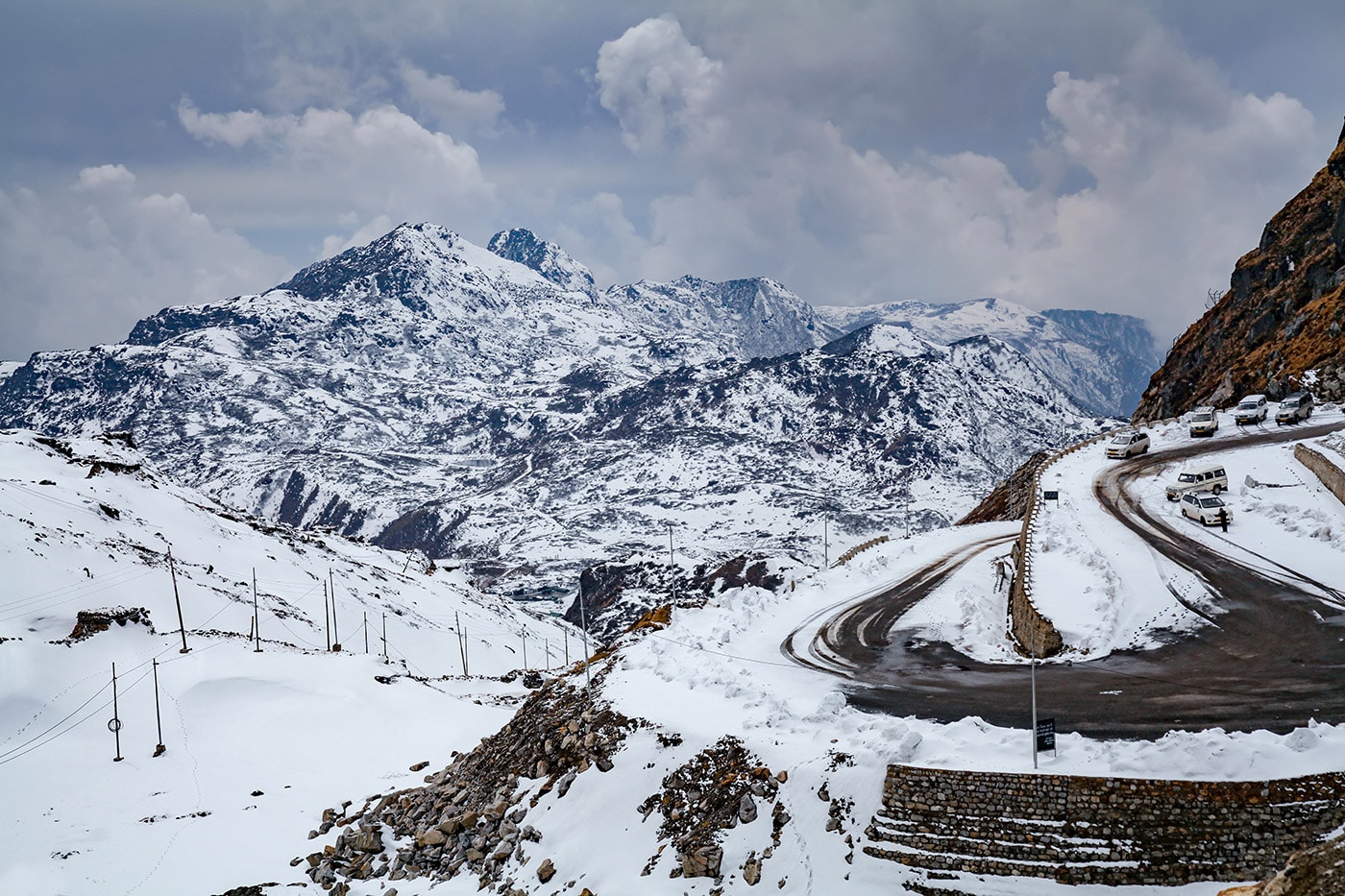
It was closed for almost 40 years until it was reopened in 2006, connecting Hindu and Buddhist pilgrimage routes.
At 3000 meters above sea level, we find Zuluk (or Dzuluk), a small village in the eastern part of Sikkim, in the heart of the Himalayas. Stunning views of the Kanchenjunga, virgin forests and green meadows make it an essential visit for those eager to discover part of the ancient silk route from Tibet to India.
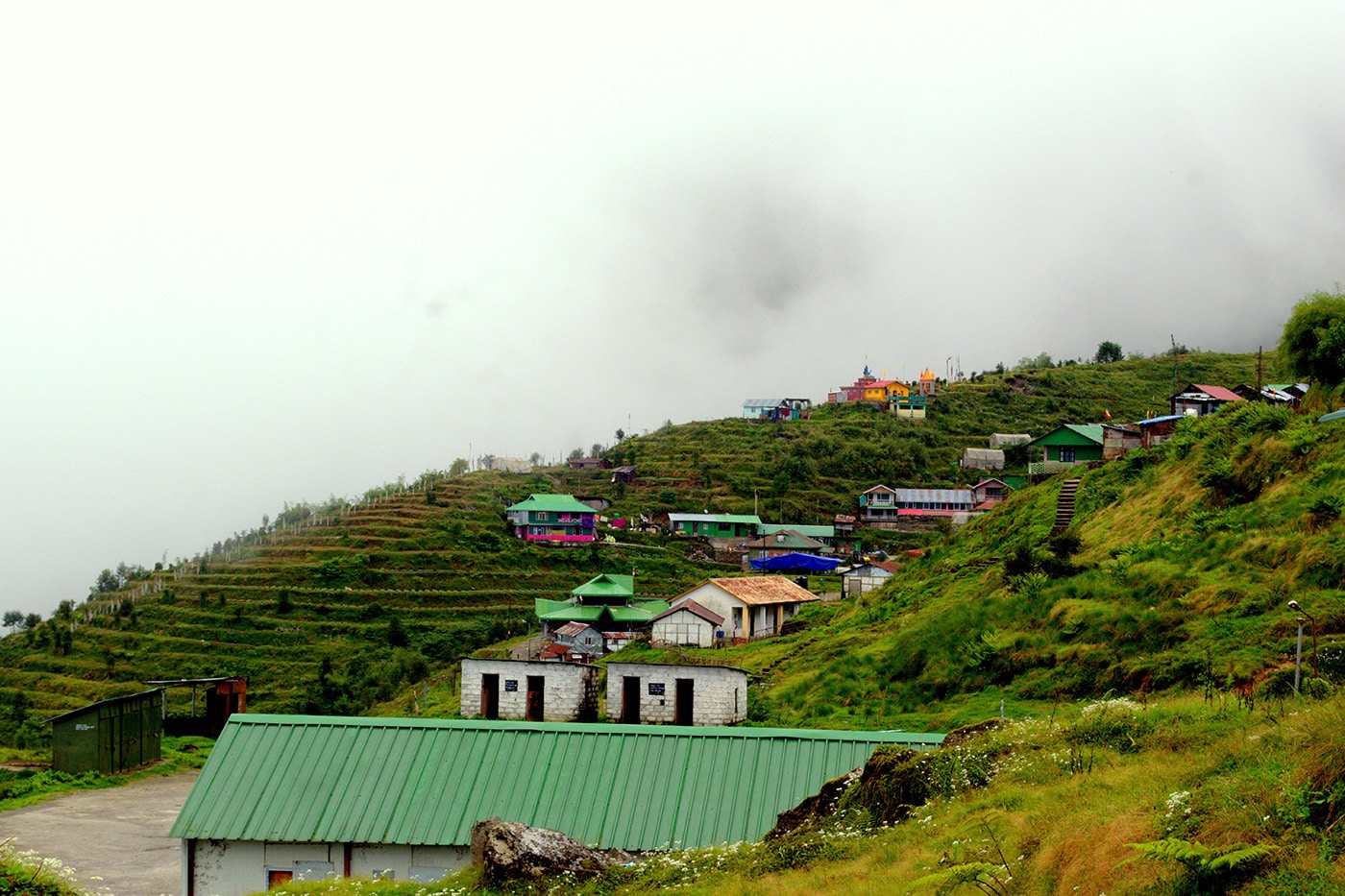
A special permit is required to enter, and it is best to find a homestay, since the town lacks hotels.
Declared a World Heritage Site in 2016 for its biodiversity and protection, Khangchendzonga National Park is home to the world’s third highest peak, Kanchenjunga Peak, at 8,586 m. The park borders Nepal and Tibet, and is home to oak, fir and birch forests.
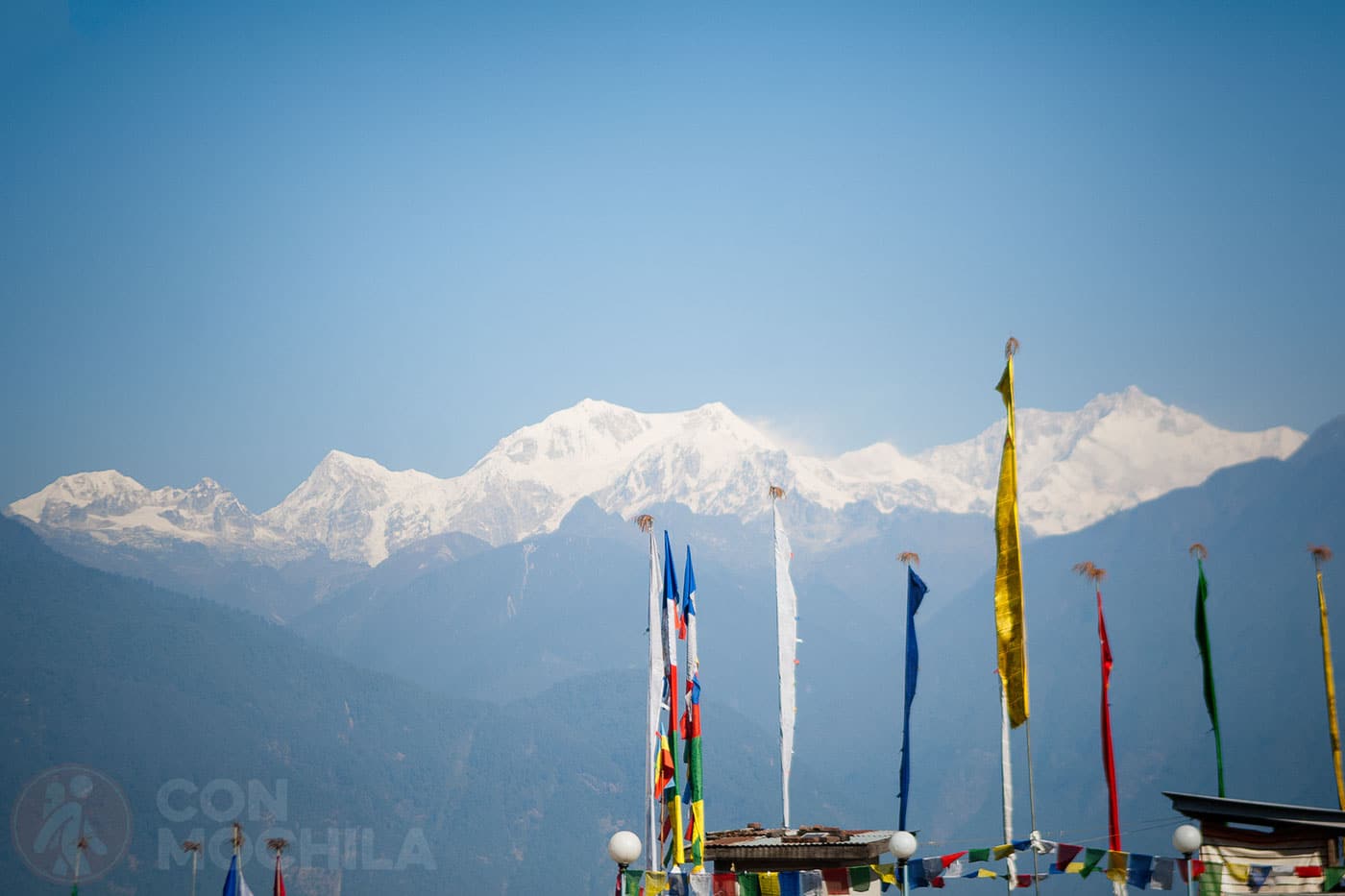
As for wildlife, bears, wild dogs, snow leopards and some reptiles inhabit these mountains. There are also several trekking routes that leave from Yuksom, and foreigners need certain permits.
Shiva devotees will find in Solophok Chardham a religious center with an impressive statue of over 26 meters in height in a seated position. It is said that to attain Moksha, believers must make a pilgrimage to the dhams, the abodes of the gods in the four directions of India, which is why four replicas of them were created here.
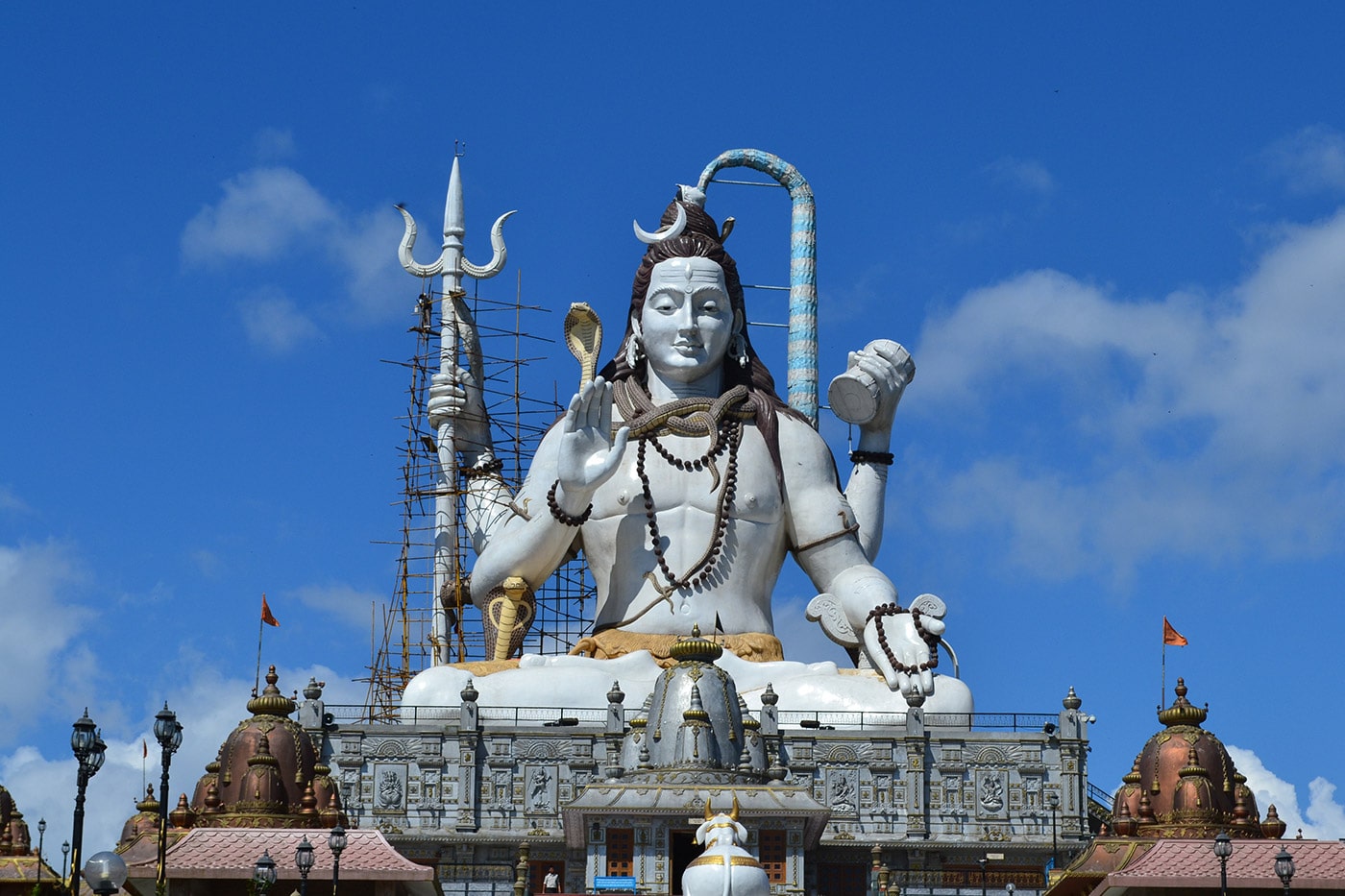
This center is part of the state government’s drive to promote religious tourism in Sikkim.
From Siliguri train station or Bagdogra airport, you can start this 7-day tour to visit the city of Gangtok and its most famous monasteries, such as Rumtek Monastery and Enchey Monastery. Transfers are by private car or van.
Even though there are only two streets in Sikkim with several accommodation options to choose from, we decided on the Kabur hotel. A fireplace, spacious and clean rooms convinced us that it was the right place. In addition, it has beautiful views and a kitchen with delicious Indian dishes, momos, soups and masala poppadoms.
You can also take a look at the recommendations we detail below:
The best way to get around Sikkim and between its towns and cities is by jeep on the road. Another way is to trek, by choosing from different routes promoted by the local government such as the Monasteries route, Rinchenpong-Soreng route, etc.
Click on the image and it will take you to a new Google Maps window with all the points of interest to travel around Sikkim.
ACTIVE CAMPAIGN !
Until december 1st, you can get an automatic 15% discount on your Heymondo travel insurance.